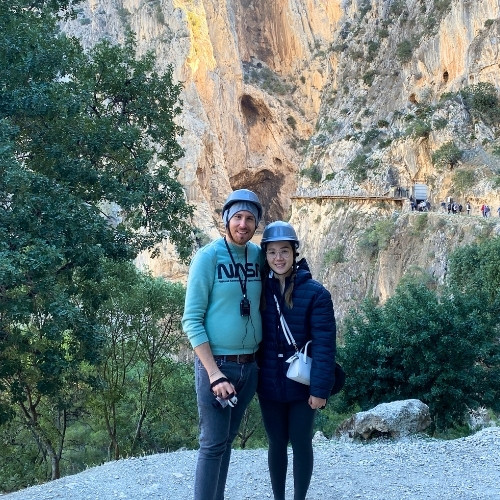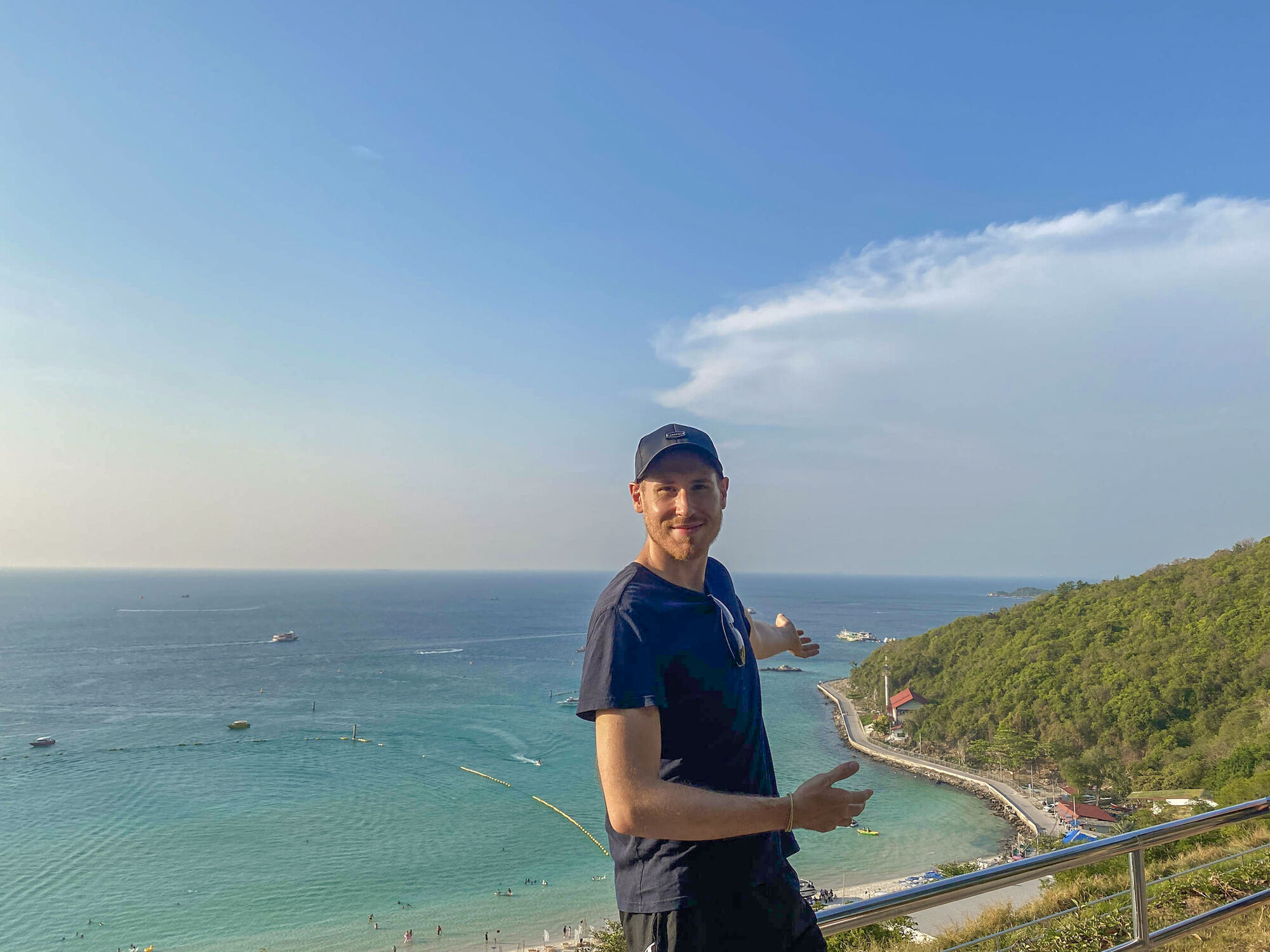I love Andalusia, so much that we always come back for me. The food, the beaches, the white villages, there’s so much to see as an outsider. One place we love very much is Cordoba. But the thing is…there are so many great day trips from Cordoba, and you’d be missing out if you only stay in town.
Cordoba is a great travel hub. You stand in the heart of Andalusia, so it’s super easy to hop on a train, bus, or car and reach smaller towns and unknown territory.
Plus, you can pick bigger cities like Malaga or Granada or more unique spots like Ronda or even Medina Azahara, which is much closer.
Want to know more? Here are 10 day trips from Cordoba, together with some essentials you must know to prepare for the day ahead.
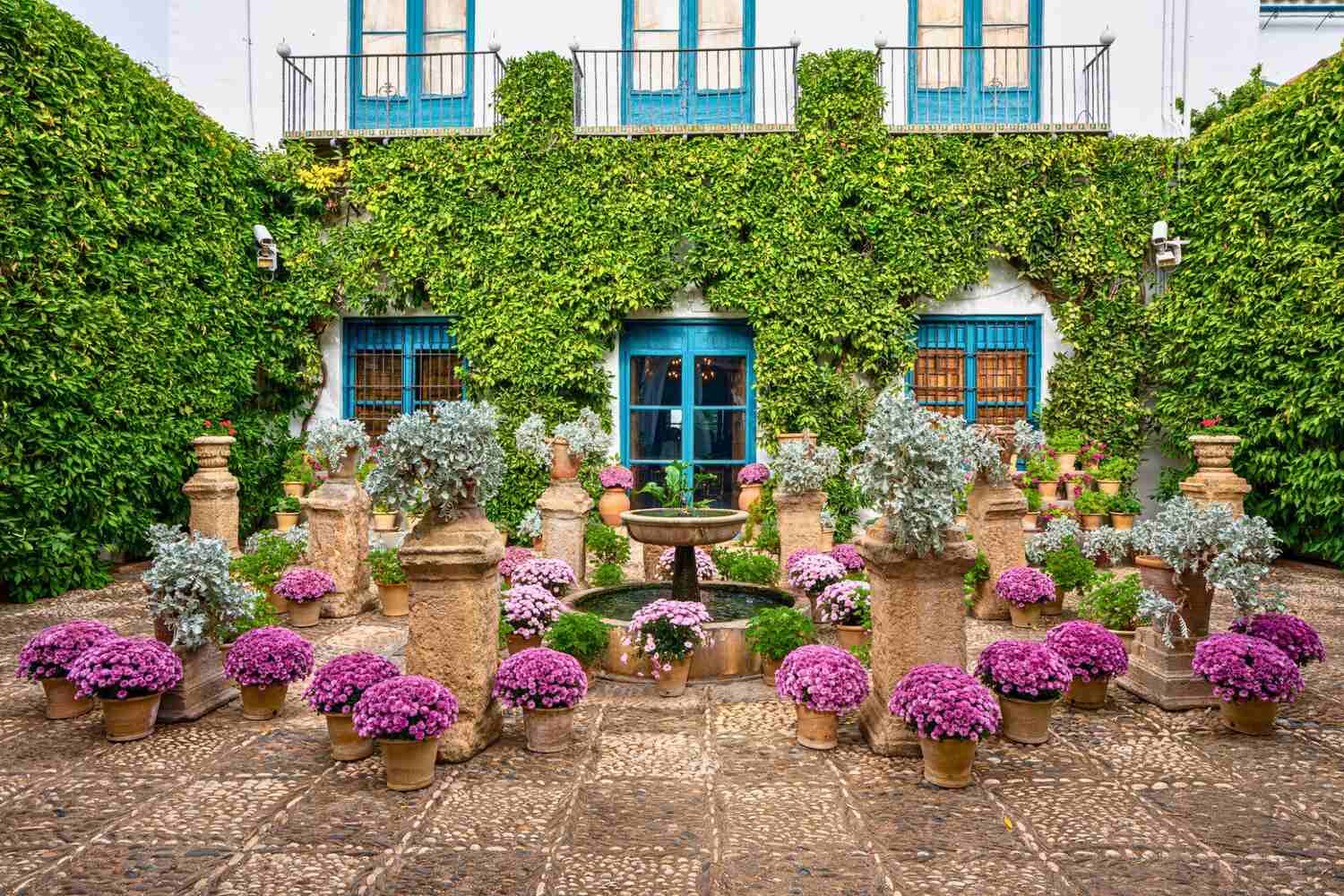
Introducing Cordoba
Before going through all the day trips, there are some elements to keep in mind to have a smooth trip. Figure out which day trips spark your interest, decide how you’ll travel, and think about how many nights you want in Cordoba. Let me tell you – I wish I read those before going the first time years ago!
How to Travel from Cordoba?
Trains are fast, reliable, and the easiest way to reach big cities. You can buy tickets online or at the station, and if you book early, you might find some good discounts. Just make sure to get there a little ahead of time so you’re not running to catch your train at the last minute.
Buses are usually cheaper than trains, but they take longer. That said, they’re a good option for visiting smaller towns, especially if there’s no direct train. I don’t particularly recommend buses unless you’re on a budget or you plan to visit towns without a train station.
Renting a car gives you full control over your schedule and is perfect if you want to explore villages or more remote areas. Honestly speaking, we always rent a car in Spain, but we know the roads. Just keep in mind that parking can be a hassle in some towns, especially in older areas with narrow streets.
To be fair, your choice really depends on where you’re going and your personal preference.
How Long to Stay in Cordoba?
Well, it can be a quick stop, and most people only spend a day in Cordoba. You can visit the Mezquita, walk around the old town, and get a feel for the city. But if you have the time, staying for two or three nights lets you slow down, enjoy the local food, and take your time as opposed to have that fear of missing out.
Cordoba also works well as a base for exploring the region. If you stay a little longer, you can take day trips to places like Ronda or Priego de Córdoba without having to switch hotels. It’s a good balance between city life and short getaways.
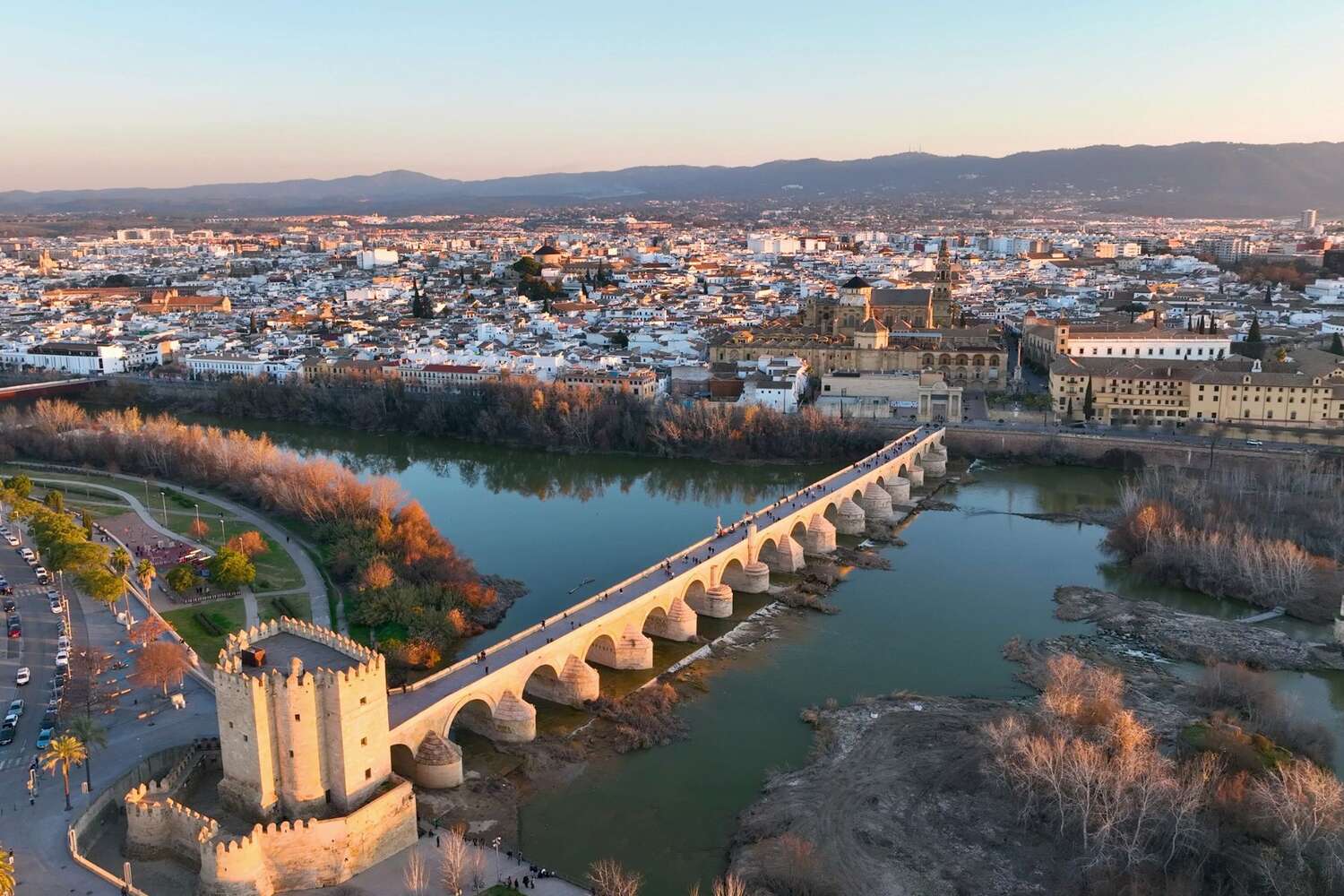
10 Best Day Trips from Cordoba
Cordoba sits close to many gems. You can find big cities or quiet villages. You’ll discover medieval fortresses, Moorish palaces, rolling vineyards, and coastal vibes, all within an easy drive or train ride that won’t break the bank. Here are ten day trips to consider. Pick the one that fits you best.
Seville
Safe to say, Seville is the kind of place that doesn’t do things halfway. Gorgeous landmarks, intense flavors, and that undeniable Andalusian energy. It’s all here, and it’s definitely worth a day trip from Cordoba.
When you get here, start with the Alcázar of Seville, one of the oldest palaces in Europe that’s still in use today.
This isn’t just a pretty palace though. It was built in the 10th century as a fortress during Muslim rule, and later expanded by King Pedro I in the 14th century, turning it into the masterpiece it is now with Arabic arches, and carved wooden ceilings.
It’s covered in detailed tilework, While you’re here, check out the Patio de las Doncellas courtyard surrounded by horseshoe arches, with a long reflecting pool in the middle. Outside, the gardens are massive, filled with fountains and beautiful palm trees where you can sit and enjoy the moment.
You’ll need at least two hours to explore properly. And trust me book your tickets early, because the line can be massive.
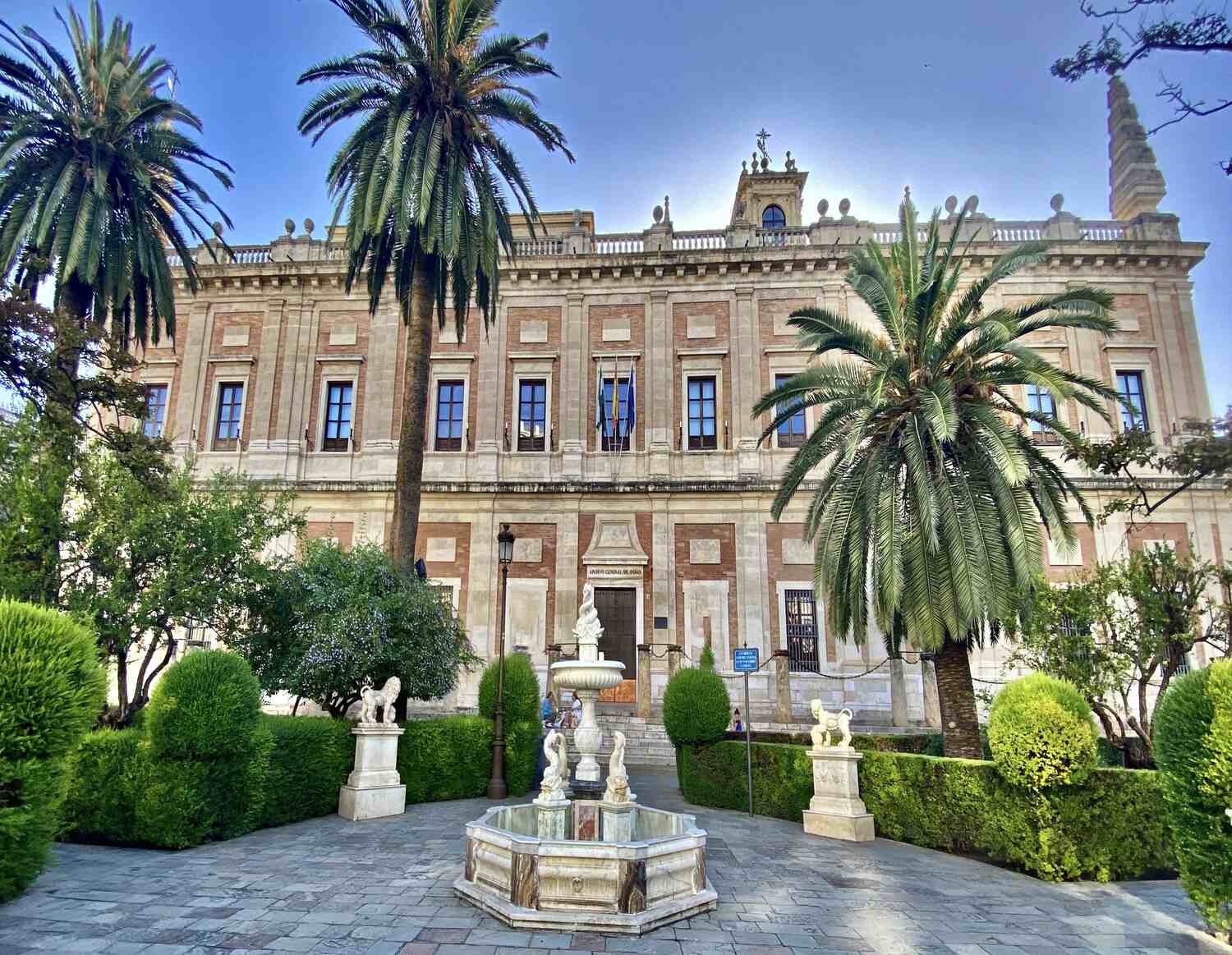
Next door, Seville Cathedral dominates the skyline. You guessed it, you can’t skip it! It was built in 1401 and it’s the largest Gothic cathedral in the world. Inside, don’t miss Christopher Columbus’ tomb and the golden altars.
Climb the Giralda Tower for the best views. Yes, it costs a little more to get to the top, but trust me when I say it’s worth it.
For something different, maybe after lunch, check Plaza de España. It’s probably one of the most famous landmarks in Seville, and it’s free to visit, which is an added bonus.
It was built in 1929 so it’s not as old as the cathedral, but it’s gorgeous with mosaics representing all Spanish provinces. There’s a canal and you can rent a rowboat and occasional Flamenco shows. Please do tip a small amount to the street performers to keep the passion alive!
Other than that: There are two activities you can’t skip: Eating tapas, and a flamenco show in Triana! It’s hard to beat the tapas at Santa Cruz. You can try like jamón ibérico, grilled shrimp, or salmorejo. You’ll have to stay longer for the flamenco show but the performance will get you right in the chest, believe me.
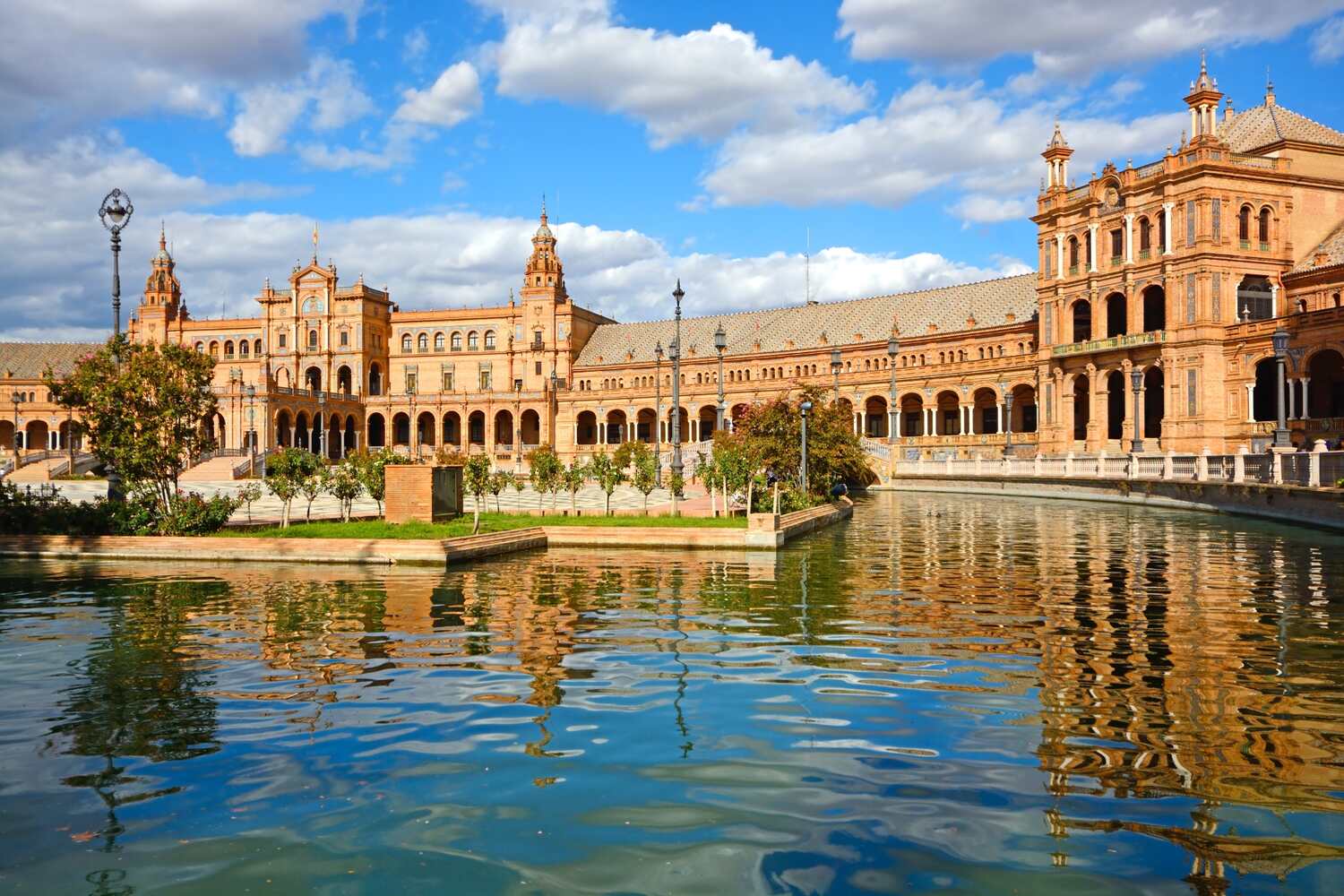
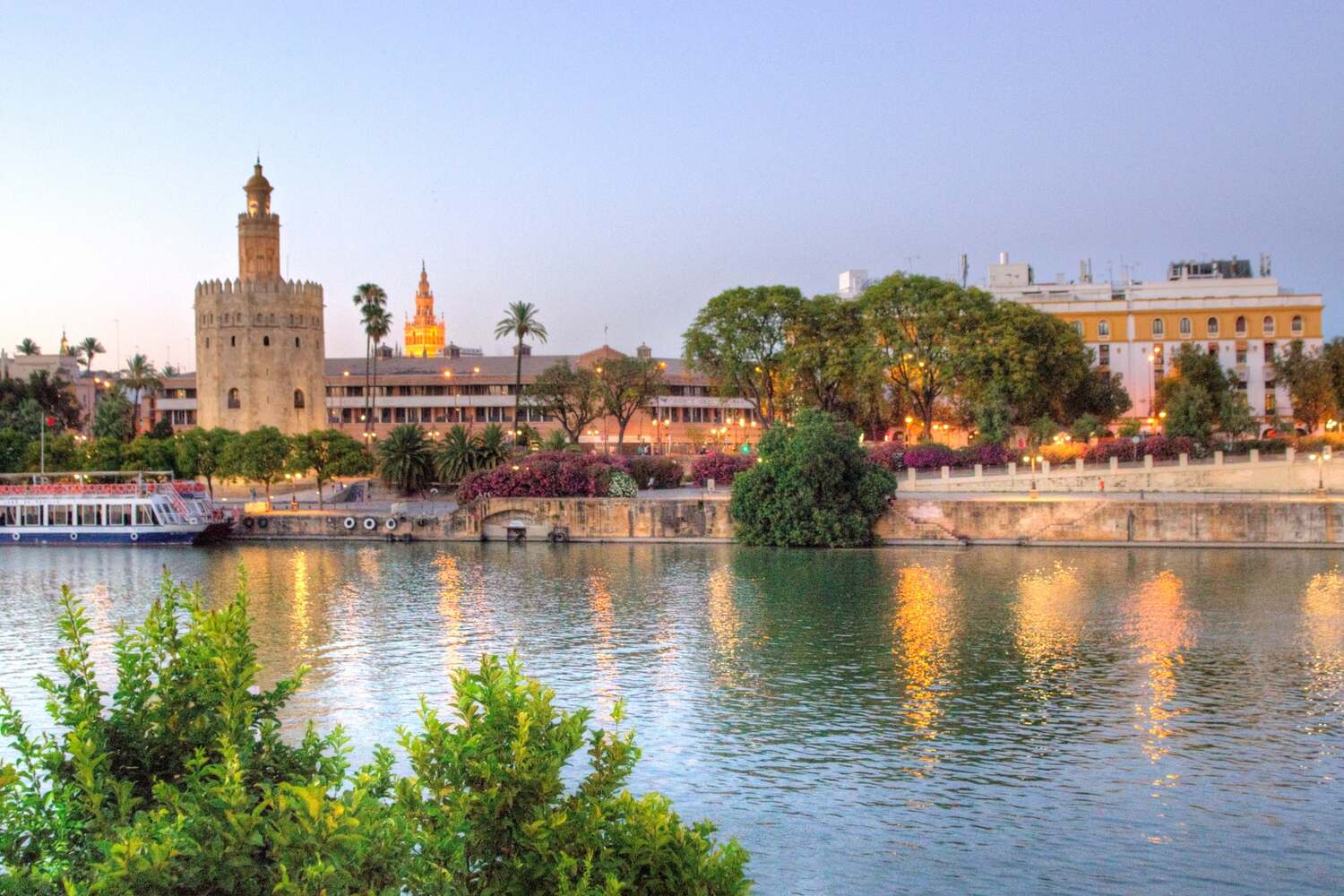
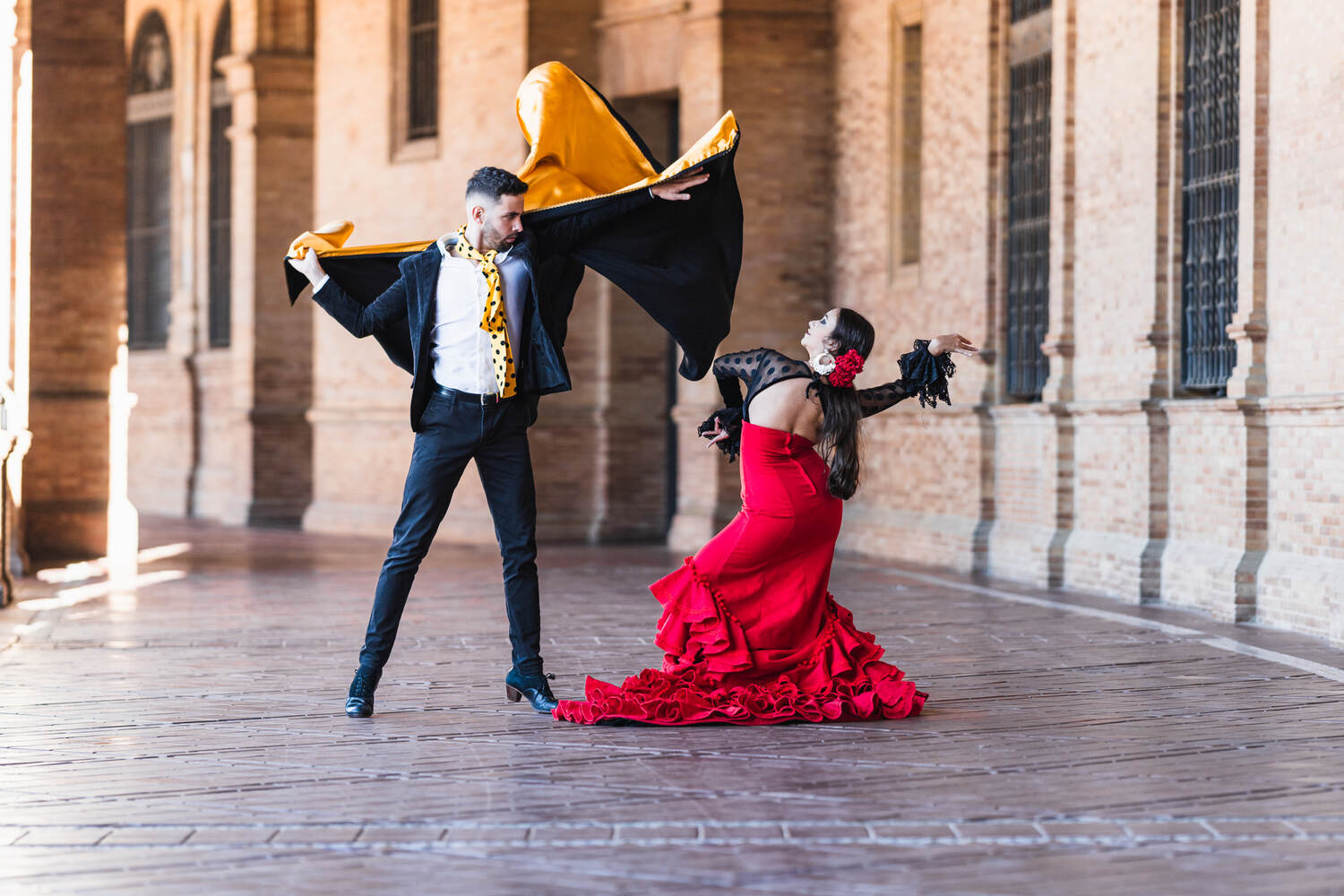
Granada
Honestly, I couldn’t imagine a trip to Andalucia without visiting La Alhambra, one of Spain’s most beautiful and interesting landmarks.
Built in the 13th and 14th centuries, the complex is a mix of Arabic-style Moorish palaces, courtyards, and gardens. The Nasrid Palaces are the highlight and my personal favorite, yet the most crowded so get there early. You have detailed carvings on rock, marble columns, and stunning fountains. Tickets sell out weeks in advance, so book early.
Outside, the Generalife Gardens has nice walkways, fountains, and shady trees. This is really nice in the summer months, as it gets really hot in Granada.
Now, Granada is not only about the Alhambra – Far from that. After spending 3 to 4 hours there, head to the city center and visit Granada Cathedral and the Alcaicería Market to grab some souvenirs while you’re at it.
The Albaicín neighborhood is great too, a different side of Granada, with tea houses (called teterias), old houses, and small plazas. Order a drink at any bar, and you’ll get free tapas – anything from olives to grilled meats!
If you’ve got a sweet tooth, grab a Pionono, Granada’s famous syrupy sponge cake. Before ending the day trip from Cordoba, head to Mirador de San Nicolás for the best views of the Alhambra during the sunset and then see a flamenco show.
Sacromonte is the place to be in the evening, as they perform flamenco inside cave houses. The music echoes off the walls, making it one of the most raw, enjoyable flamenco shows in Spain.
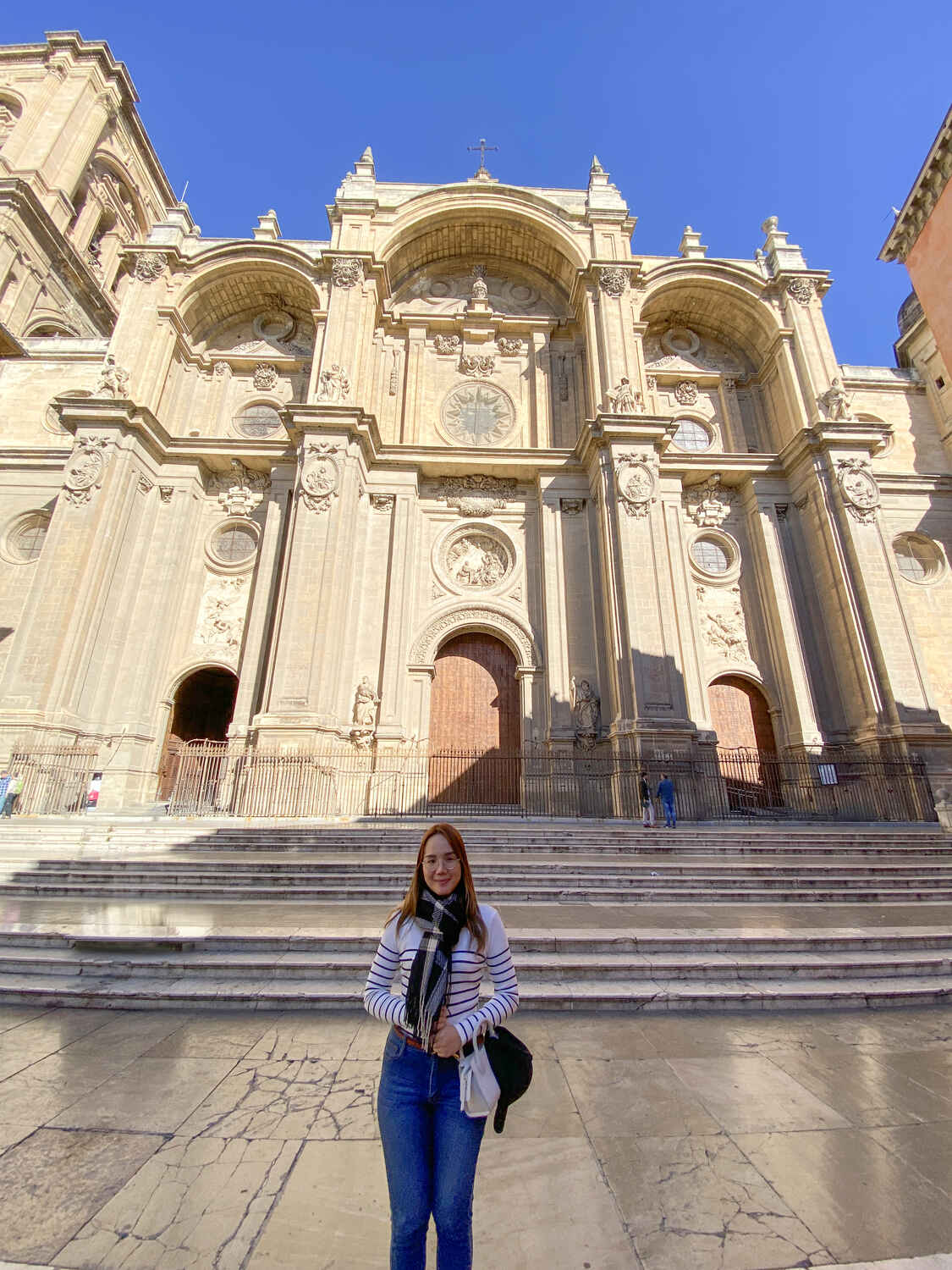
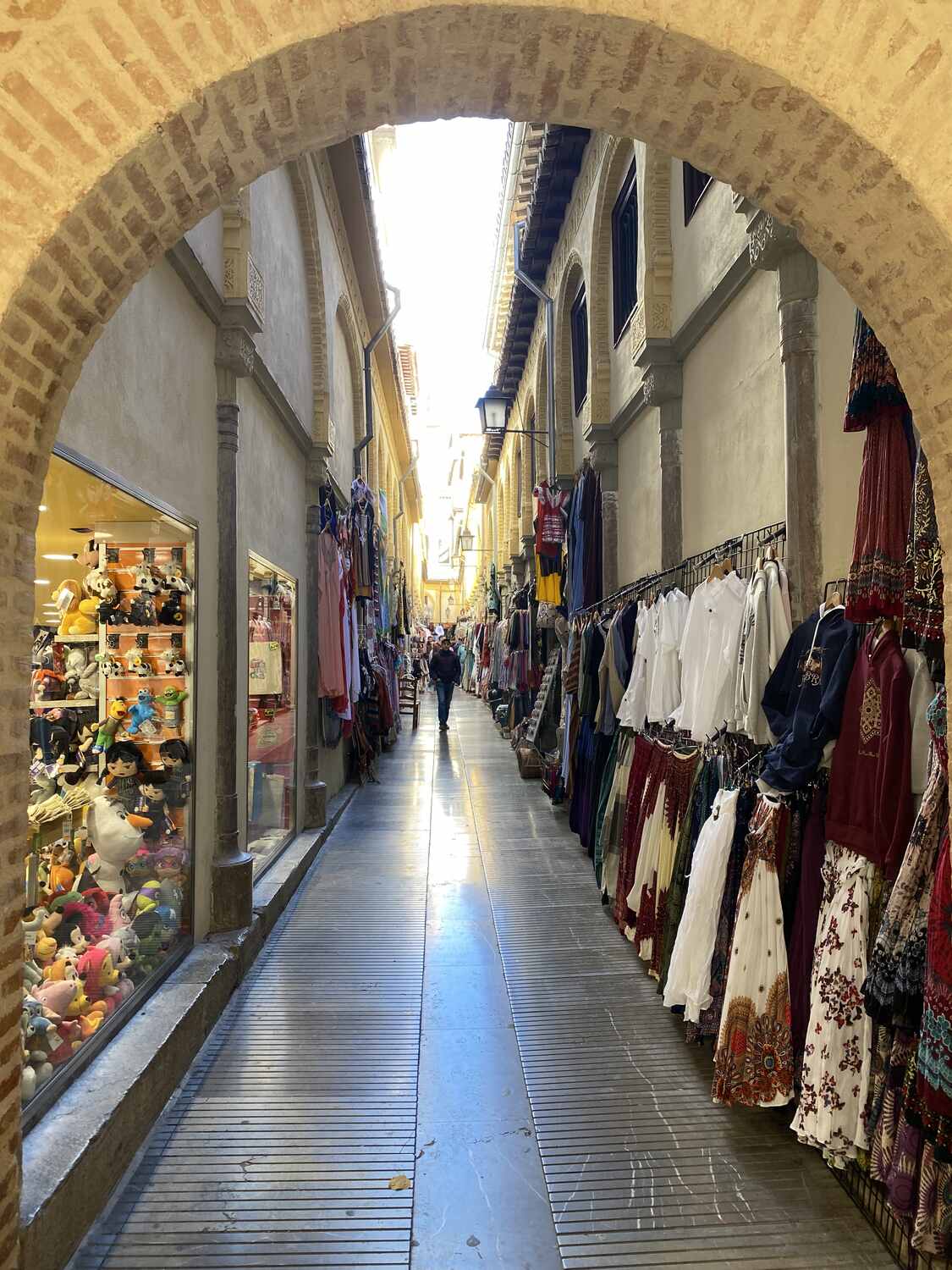
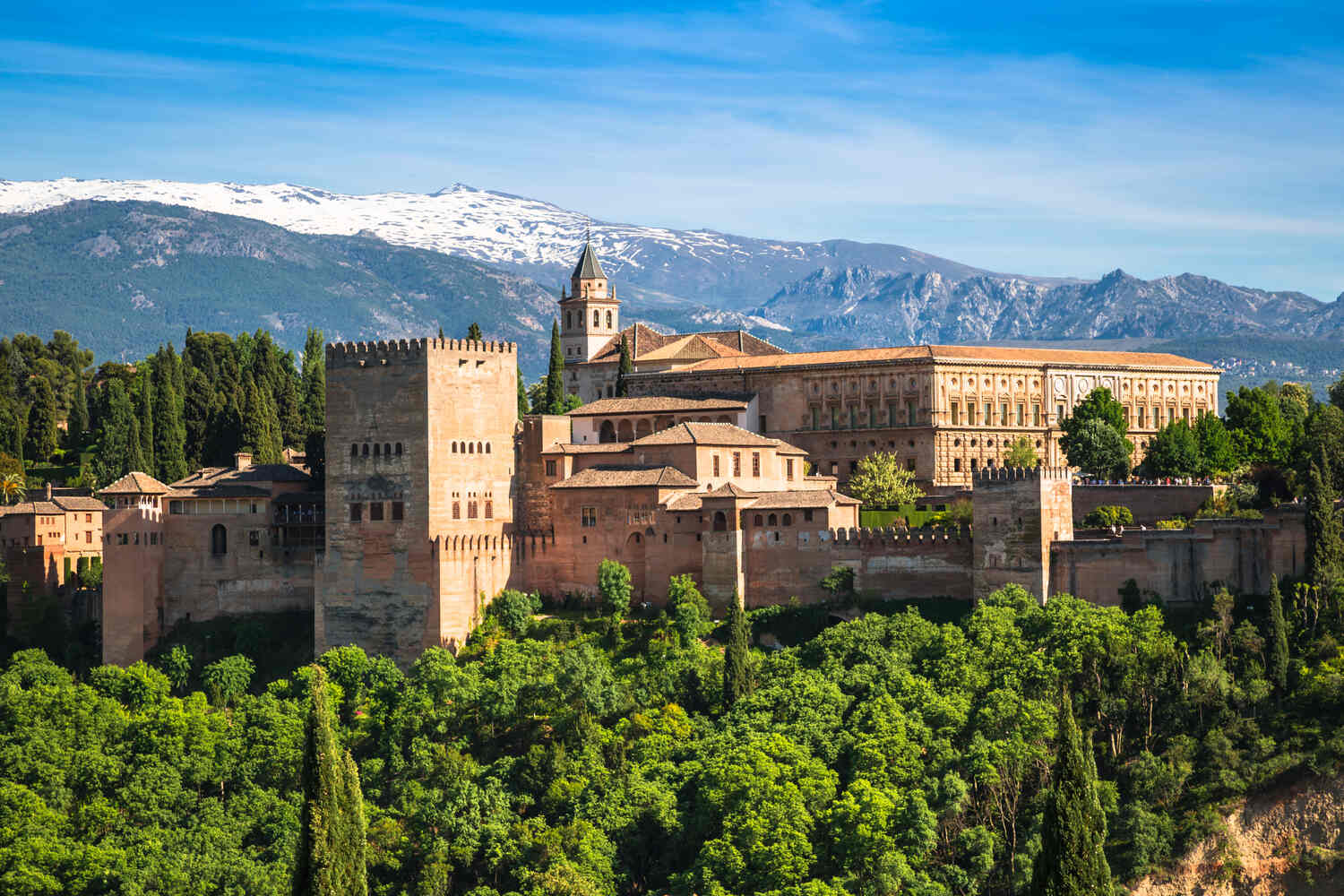
Malaga
First of all, let me say that Málaga is more than just beaches. Yes, they’re gorgeous, but it’s a city with serious history, great food, and a cool art scene. Needless to say, spending one day in Malaga from Cordoba is a great idea!
Start right in Malaga city center, at the Alcazaba. This is actually a Moorish fortress that was built in the 11th century on a hill. It did remind me of La Alhambra, but smaller and not as impressive. The stone walls, arched gates, and gardens with fountains, are all very interesting and you have great city views on top.
Just above it, the Gibralfaro Castle offers an even better panoramic view of Málaga and the coast. I recommend walking from the Alcazaba to the castle, but please do bring some water during the day because it is quite hot.
Back in the city, make your way to Málaga Cathedral, which was built between the 16th and 18th centuries. The cathedral is called “La Manquita” (The One-Armed Lady) because one of its towers was never finished. Inside, it’s full of huge columns, golden altars, and impressive artwork.
Málaga is also the birthplace of Picasso, so if you like art, check out the Picasso Museum, which has over 200 of his works as well as the Malaga Museum, which happens to be free for European citizens.
Of course, if you have time, and I hope you do, Malagueta Beach is great for a quick dip before heading back to Cordoba. Truth be told, I would spend the night in Malaga, but if you can’t, a day is still nice.
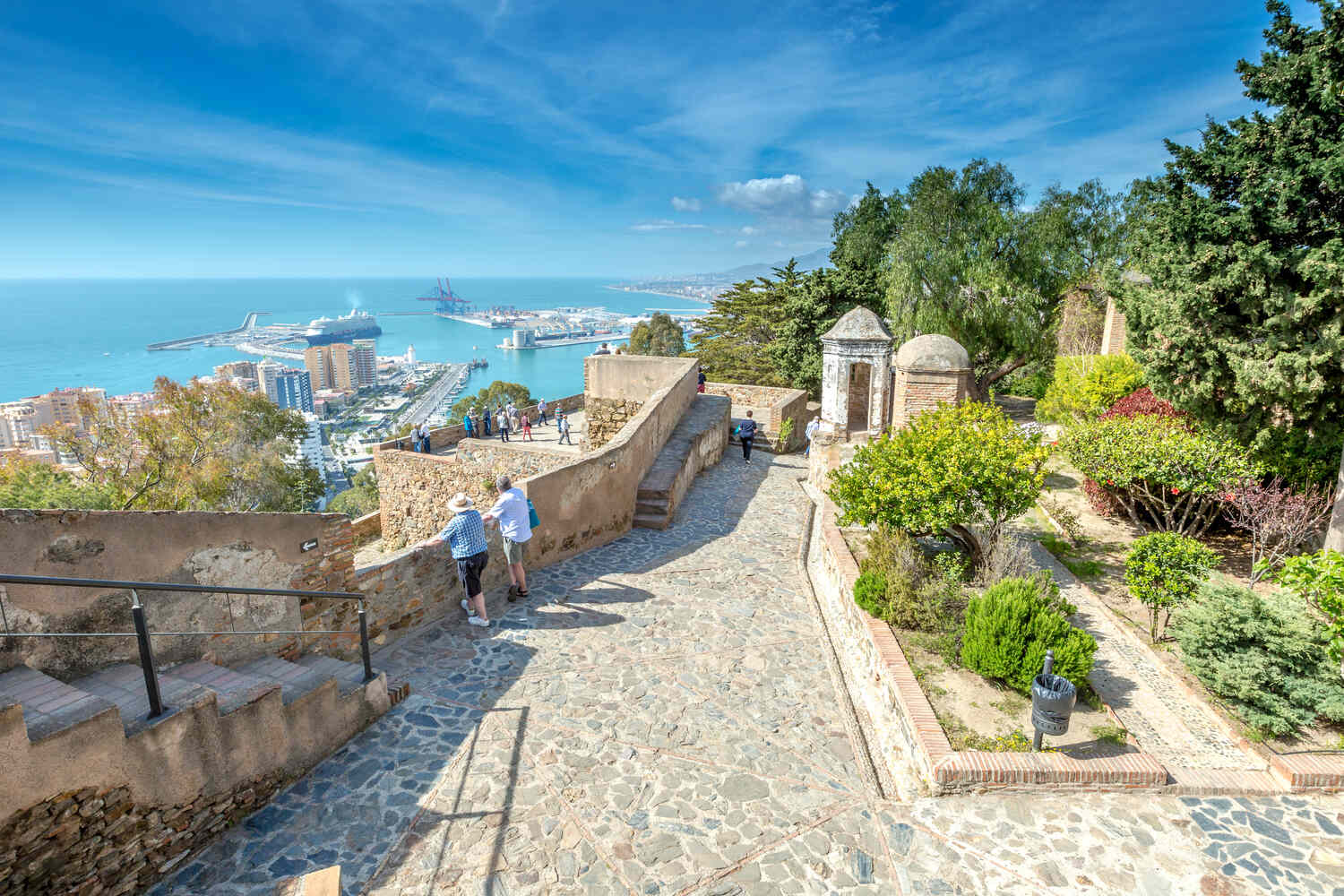
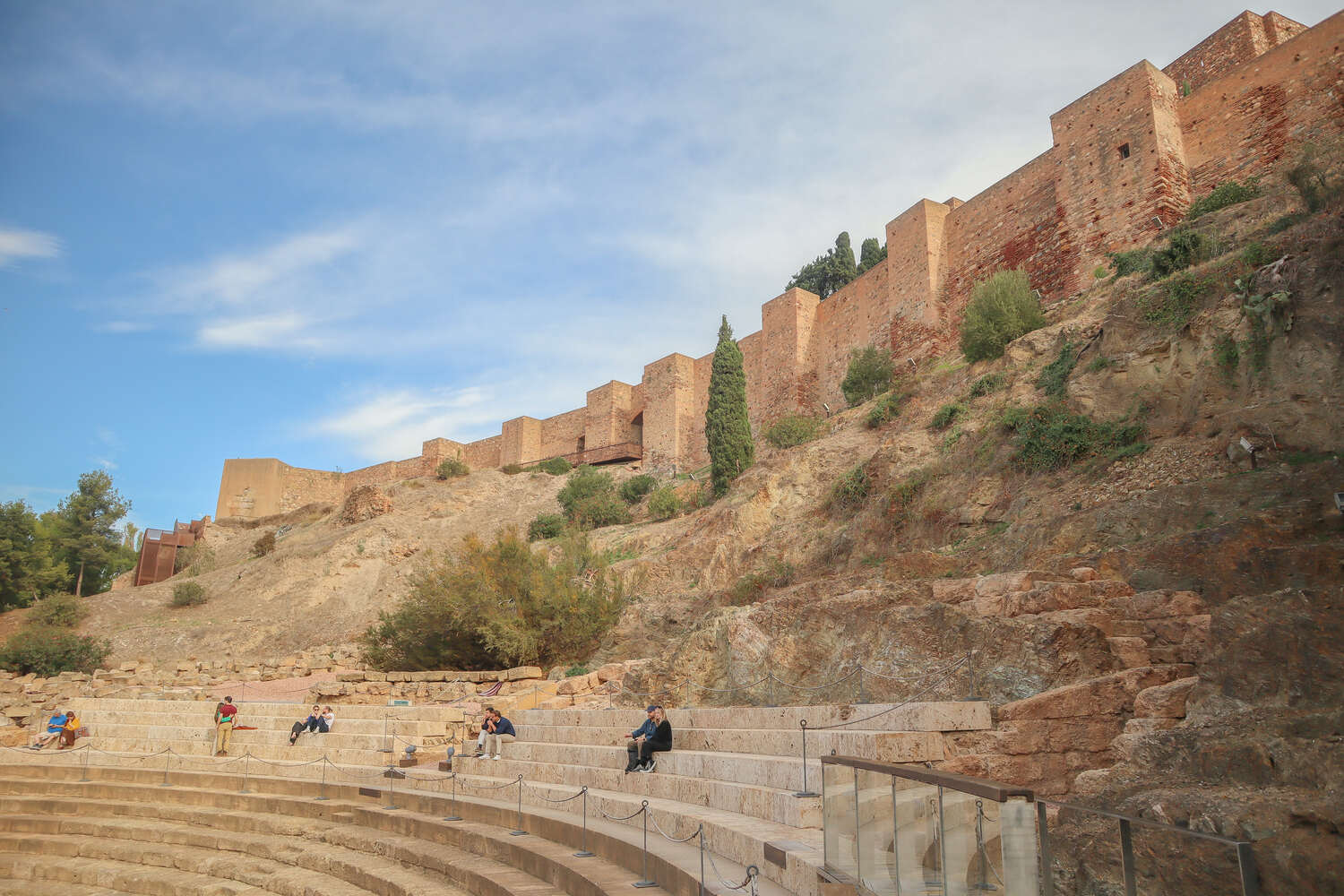
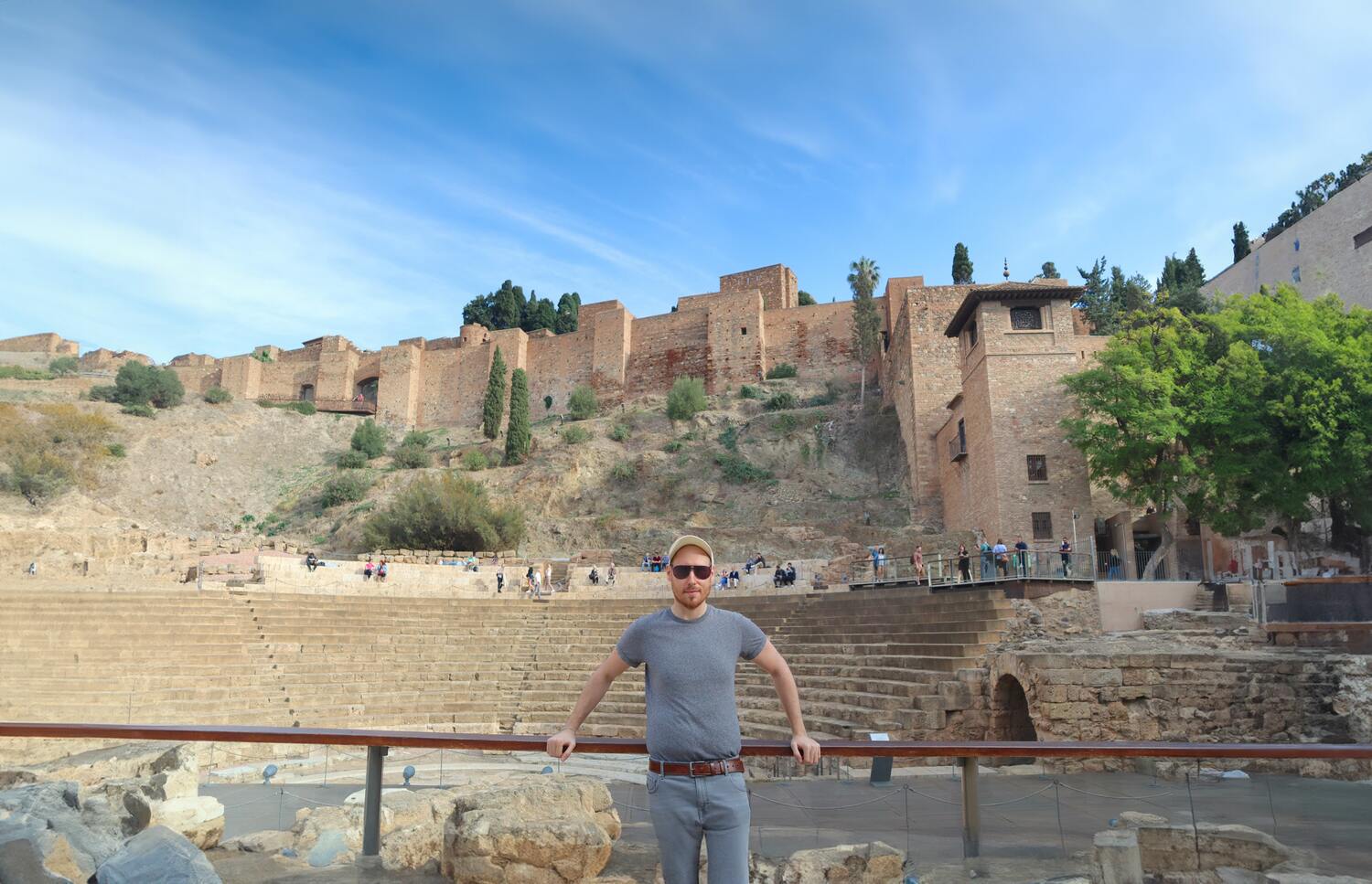
Ronda
Ronda is one of the most pleasant, gorgeous parts of Andalucia, and that definitely makes it one of the best day trips from Cordoba, despite the distance.
Ronda is one of the white towns of Andalusia and the city was built on dramatic cliffs, with one of the most jaw-dropping bridges in Spain.
The Puente Nuevo was built in 1793 and it spans the El Tajo gorge that divides the town into the older and newer parts. Walk across and stop at the viewpoints for unbelievable scenery. Trust me: It’s the kind of place that doesn’t need filters.
The town itself is full of history. The Plaza de Toros, built in 1785, is one of Spain’s oldest bullrings. Even if you’re not into bullfighting, the museum explains its the history and bullfighting in Ronda in general.
Nearby, the Palacio de Mondragón, a former Moorish palace, has tile-covered courtyards and fountains.
For the best sunset view, head to Mirador de Aldehuela, where you can see the gorge turn golden in the evening light. Ronda is small, but the landscape and history make it unforgettable.
There’s honestly too much to see in Ronda to list in a single section, so check this itinerary if you plan to go for a day in Ronda.
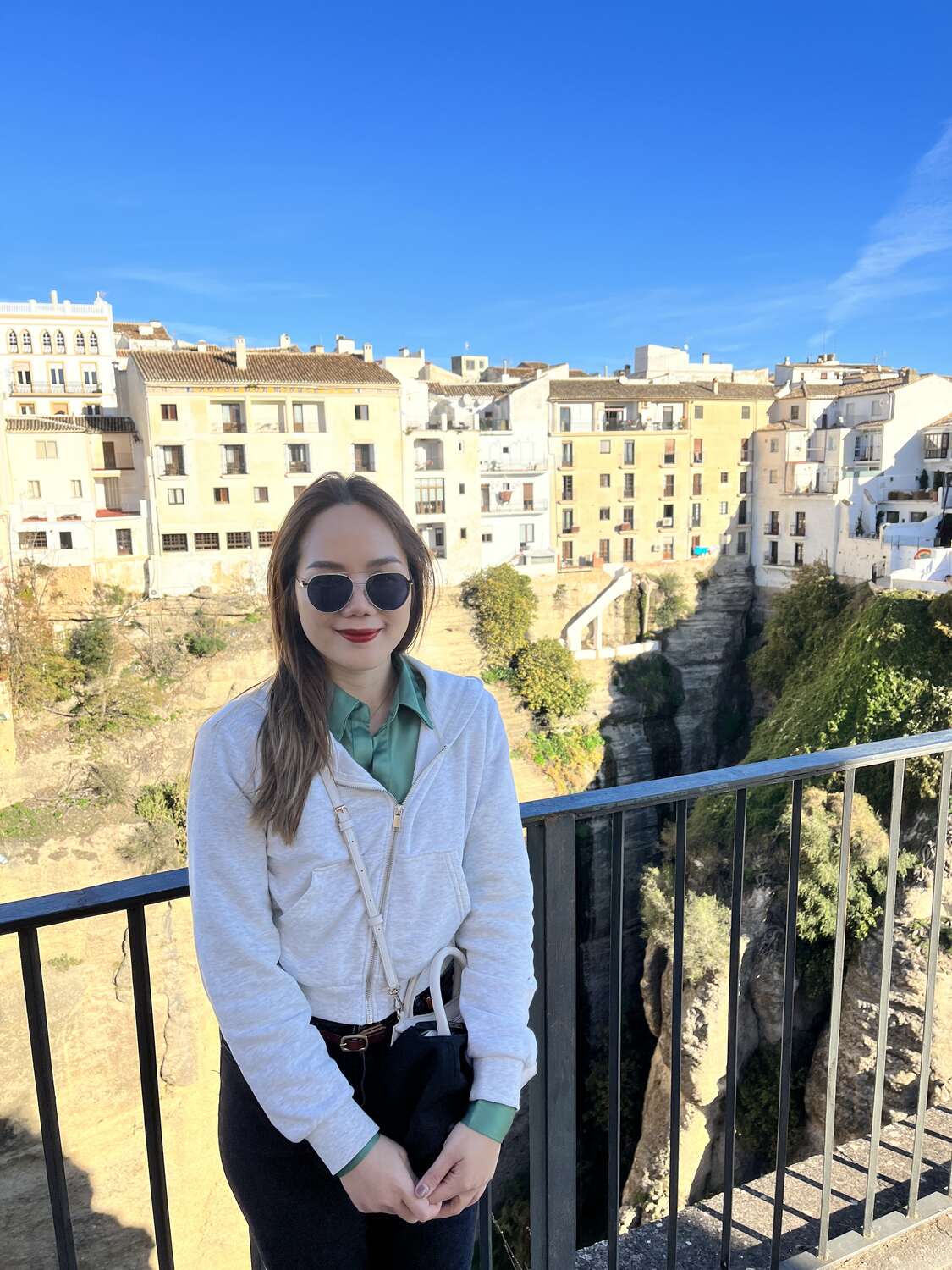
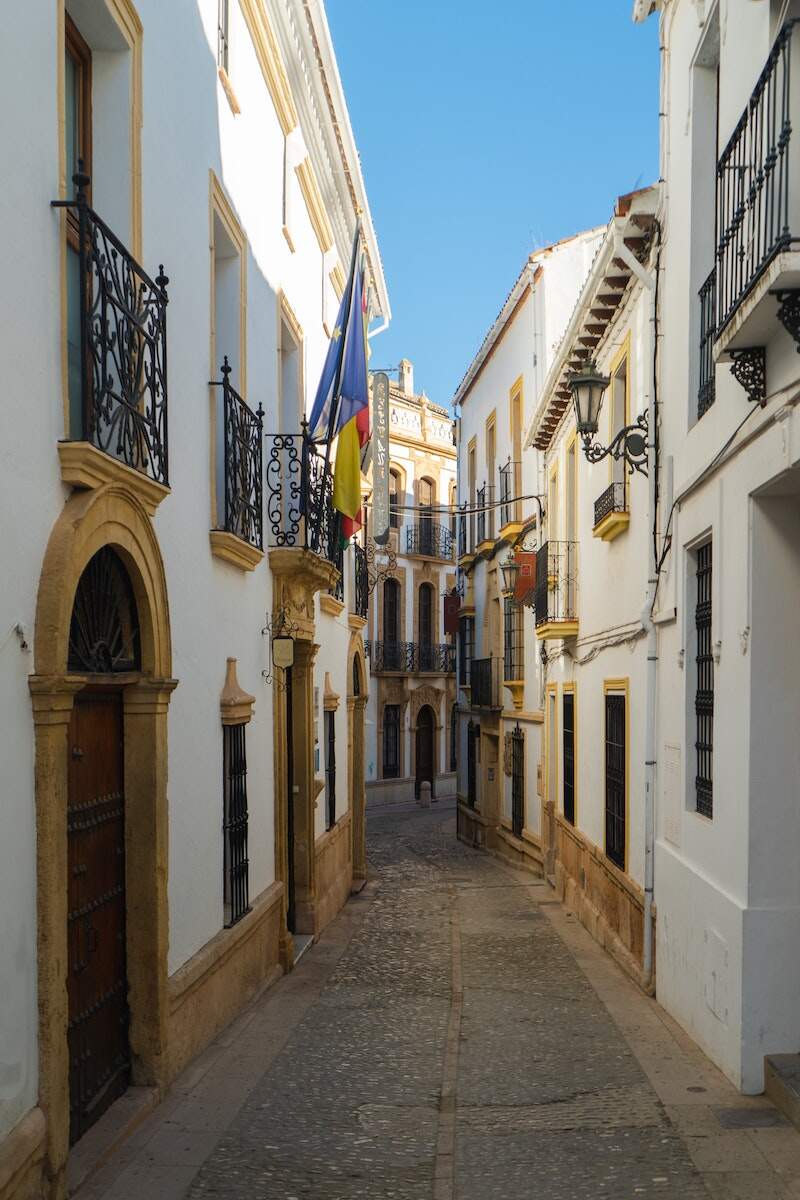
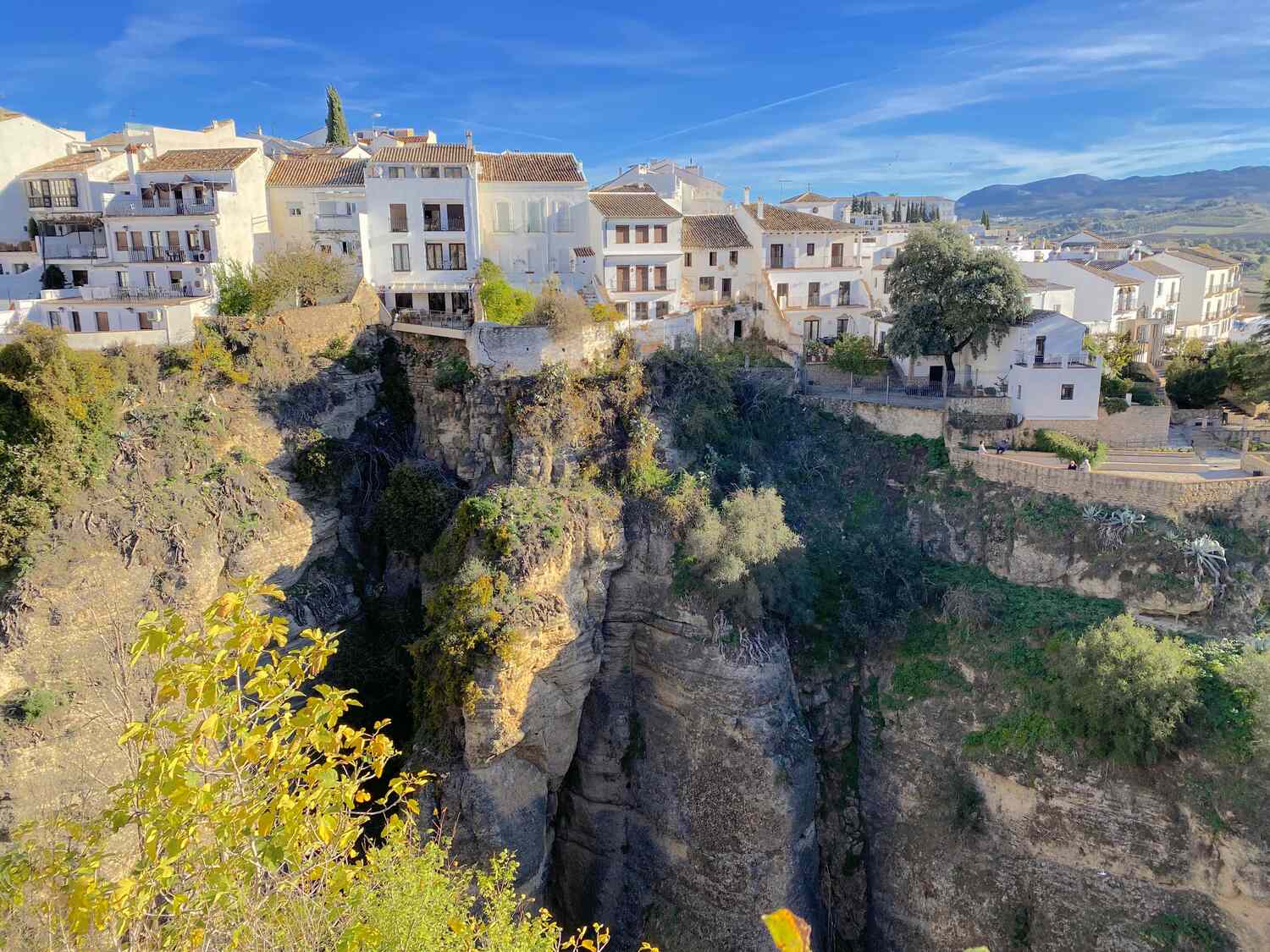
Medina Azahara
Medina Azahara is one of Spain’s most important archaeological sites and definitely one of the best things to do in Cordoba.
It’s just 8 km outside Córdoba, so you won’t have to go very far, which is nice especially if you only have one day in Cordoba. Built in the 10th century by Caliph Abd al-Rahman III, and it was meant to be the shining capital of Al-Andalus (name of Andalusia under the Muslim rule).
Today, it’s mostly ruins, but you can still walk through archways, columns, and remnants of royal palaces that hint at how it gorgeous it was back in its prime days.
I recommend starting at the museum, where you can see artifacts and interactive displays to understand the complex. Then take the shuttle bus up the hill to explore the ruins. Wear comfortable shoes because you’ll be walking a lot (and I suppose you’ll visit Cordoba on the same day too).
The best time to visit is early morning to avoid the heat, particularly in the summer months.
Even in ruins, Medina Azahara gives a real glimpse into how powerful Islamic Córdoba once was. It’s quiet, historic, and way less crowded than the Mezquita, and that’s the perfect half-day trip from Córdoba.
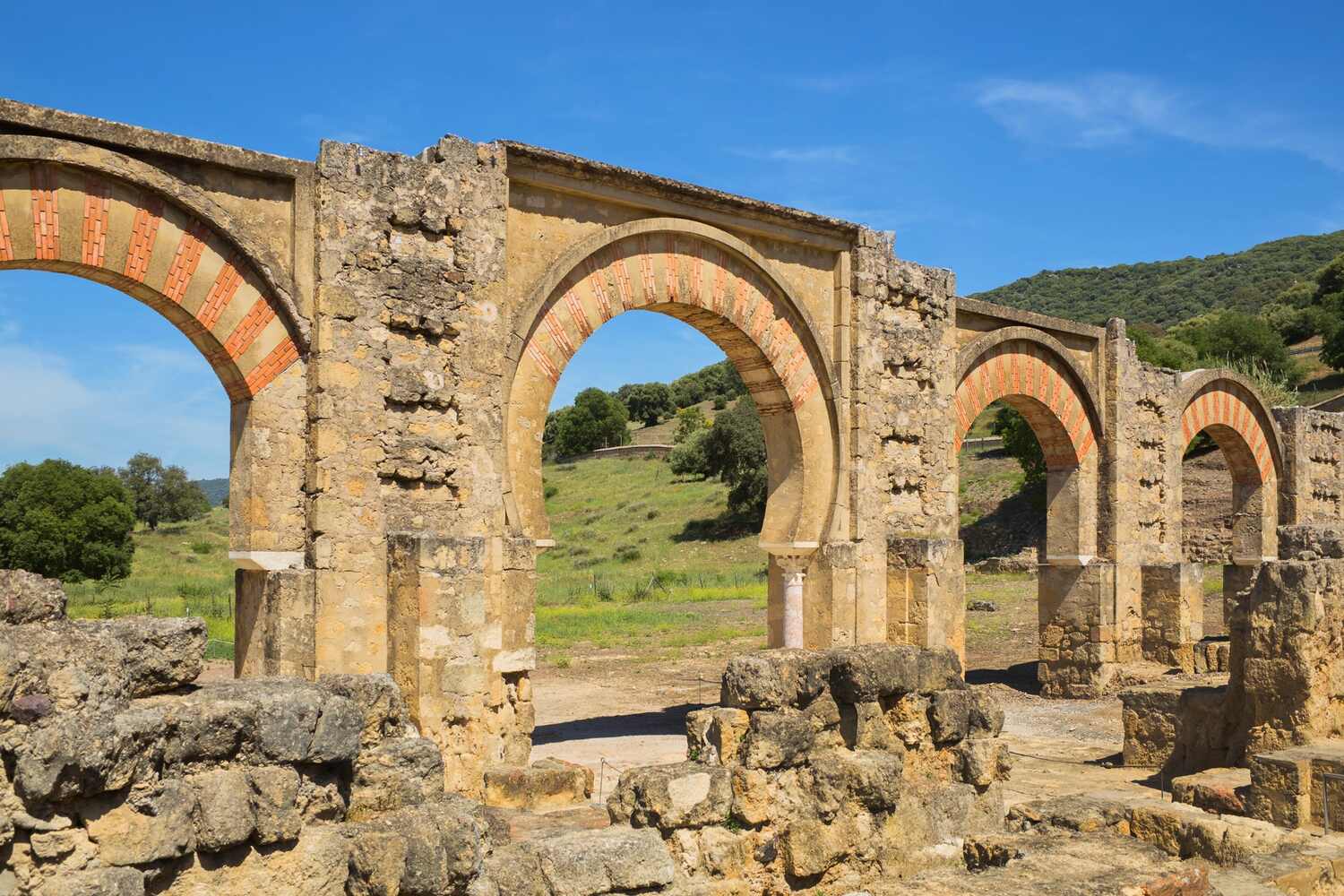
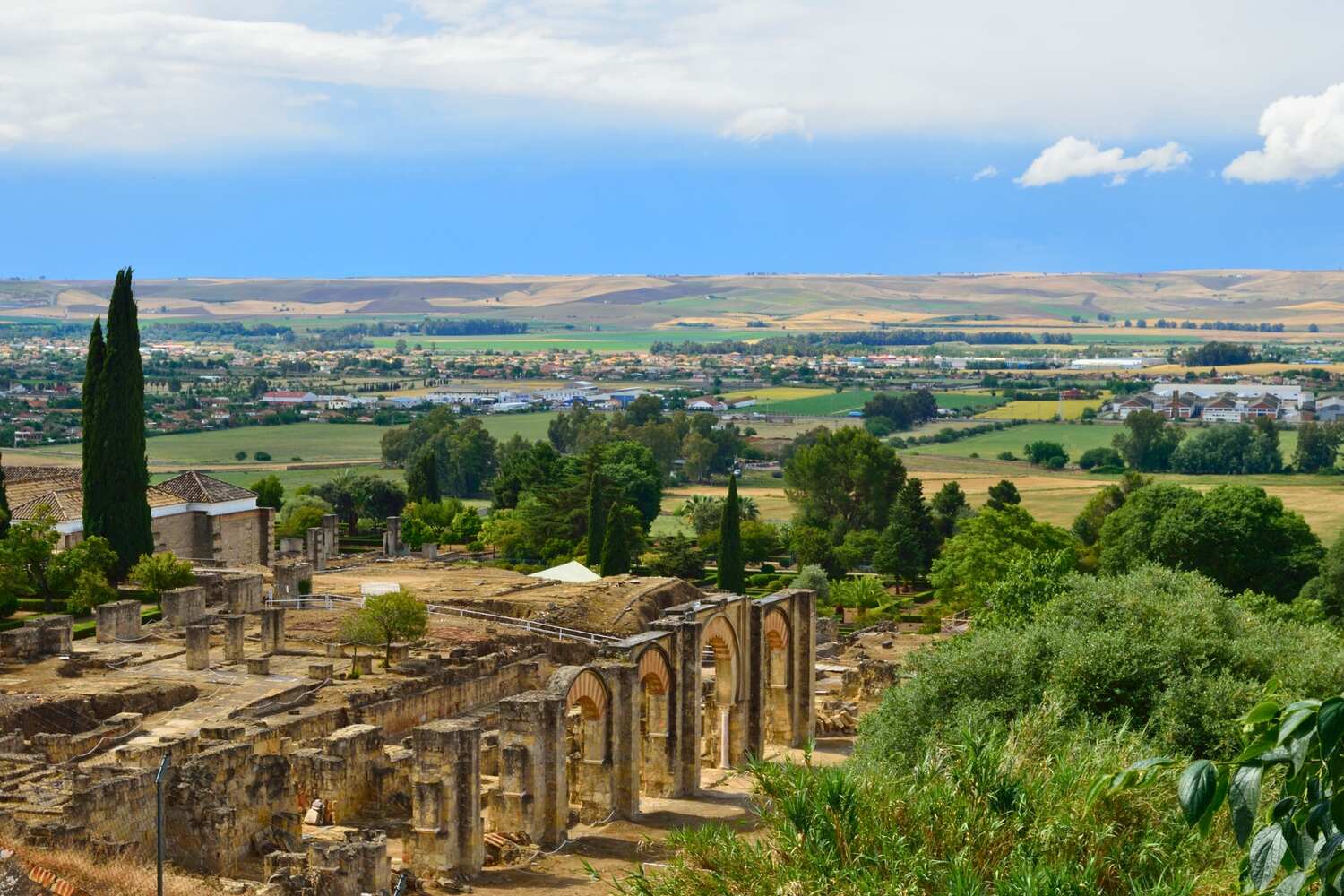
Jaén
Most people have no idea about Jaén, but if history, olive oil, and lesser numbers of tourists are your thing, you’re in best luck. Drive or train travel can take you right into Jaén in one and a half to two hours, easily.
Start your visit with the 16th-century Jaén Cathedral, which is the focal point of the main square and impossible to miss. Inside, there are numerous elaborate chapels, lofty ceilings, and holy artefacts. The Holy Veil, which some people think was used to wipe Jesus’ face, is claimed to be kept there.
The world’s capital of olive oil is another name for Jaén. Attend a taste at a nearby mill to sample various types of liquid gold and discover more about the manufacturing process.
As far as the eye can see, the fields that encircle the city are lined with olive trees in unending rows.
Take a quick cab ride up to Santa Catalina Castle, a 13th-century stronghold with expansive views of the region, for the best vista.
Finish with a hearty local meal, like pipirrana (tomato and pepper salad) or ajilimoje (garlic sauce with fish). Jaén is underrated but worth every minute!
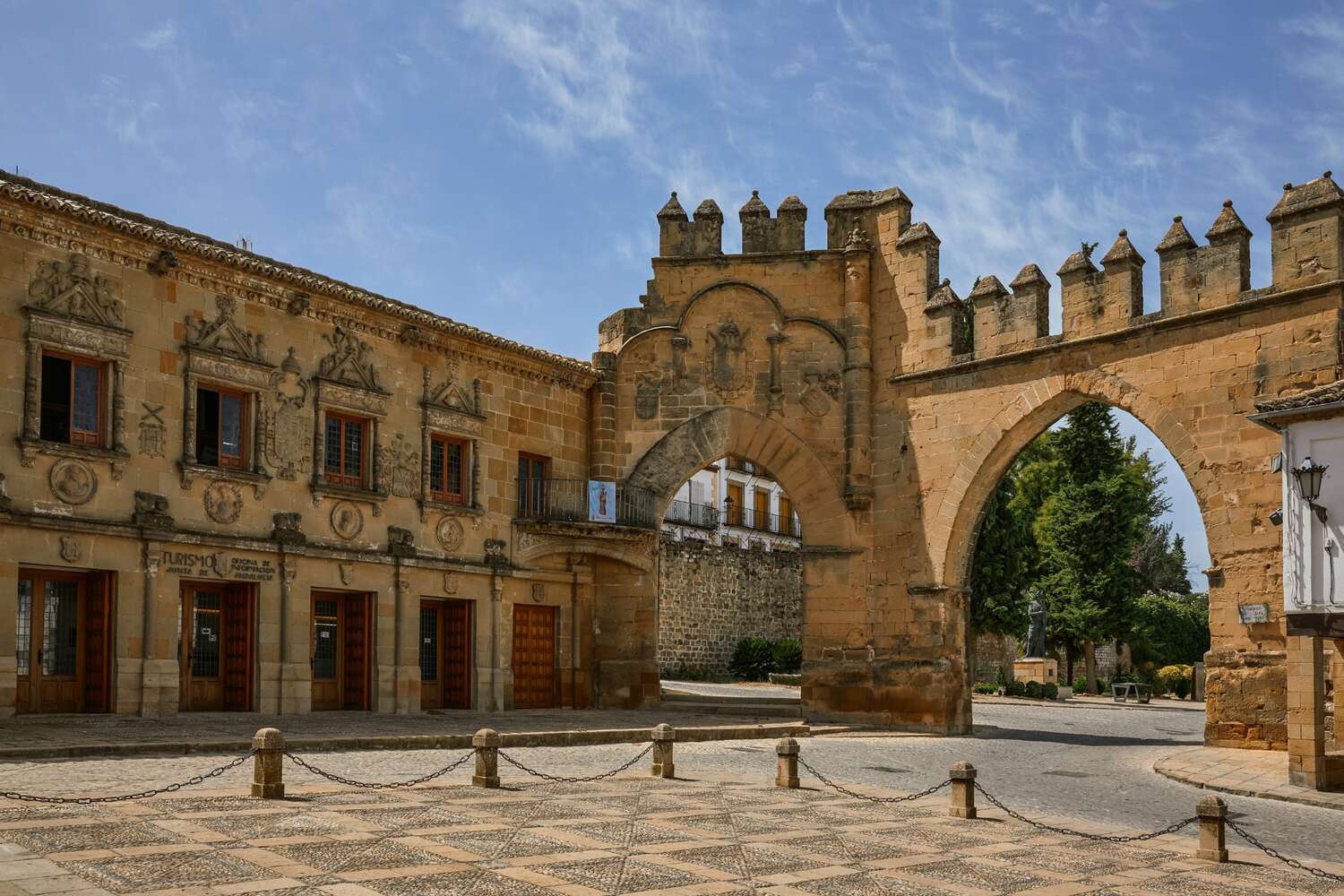
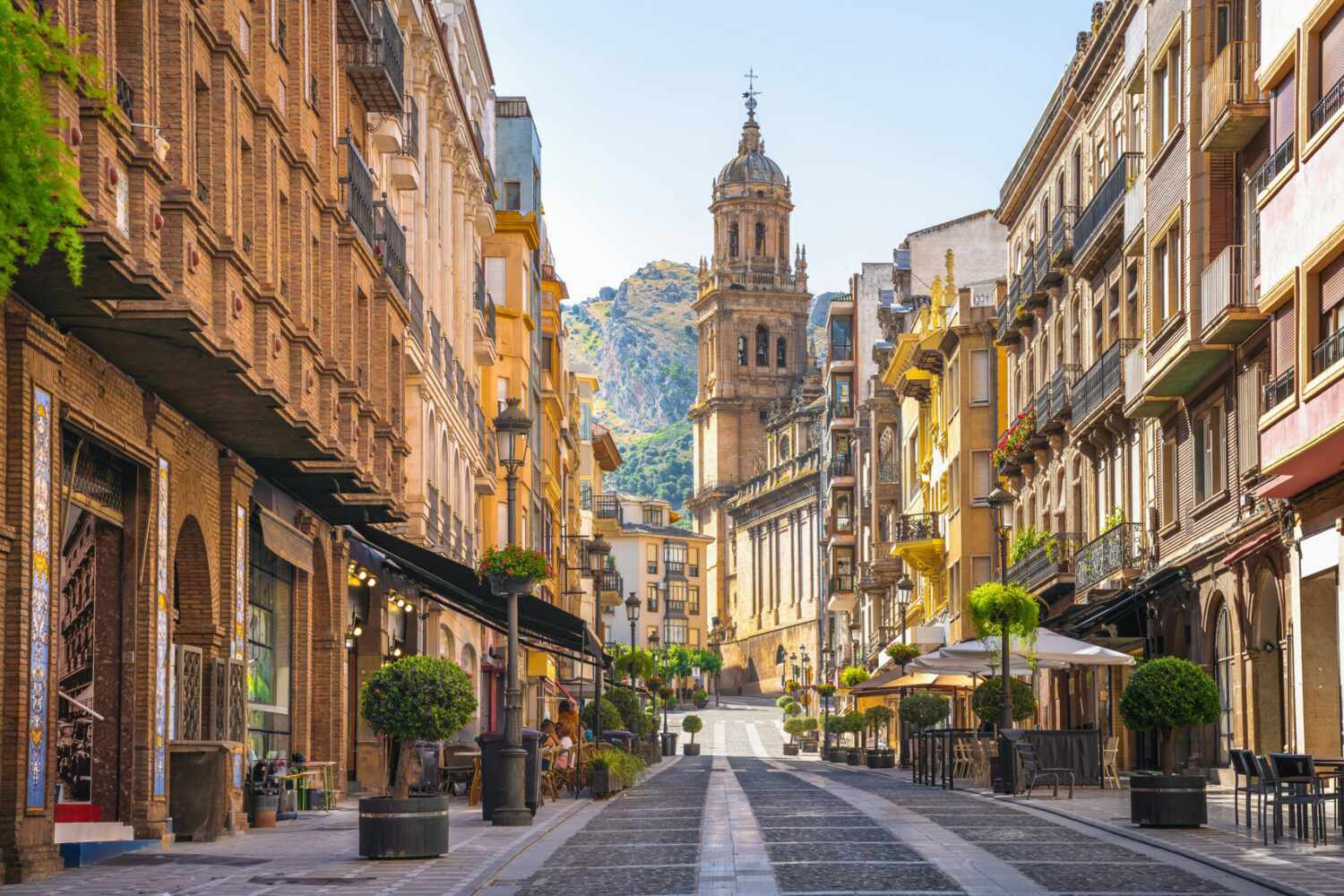
Priego de Córdoba
Priego de Córdoba is small, quiet, and beautiful. And the best part is…it’s near, just about one hour by car!
White houses, flower pots, and cute little streets make it look straight out of a postcard. I found it similar to Mijas Pueblo, just a bit bigger and with a more “Spanish” feeling if that makes sense.
The Barrio de la Villa is the prettiest part of town. Tiny alleys, bright flowers, and shady corners make it perfect for a slow walk.
The Fountain of the King is worth a stop too. Baroque design, lots of water spouts, and a peaceful setting make it a nice break. Priego is also famous for olive oil, so check out the small shops selling bottles of the best local stuff. Or go to both Jaén and Priego and compare the quality of oil in both!
There are some old churches too. Iglesia de la Asunción stands out with huge baroque decorations inside.
The views around town are great. Rolling hills, miles of olive trees, and fresh air make it a nice change from busier places. The best views in town are probably from the top of the Castillo de Priego de Córdoba, which I highly recommend if you have the chance.
In short…Priego is slow, simple, and really pretty.
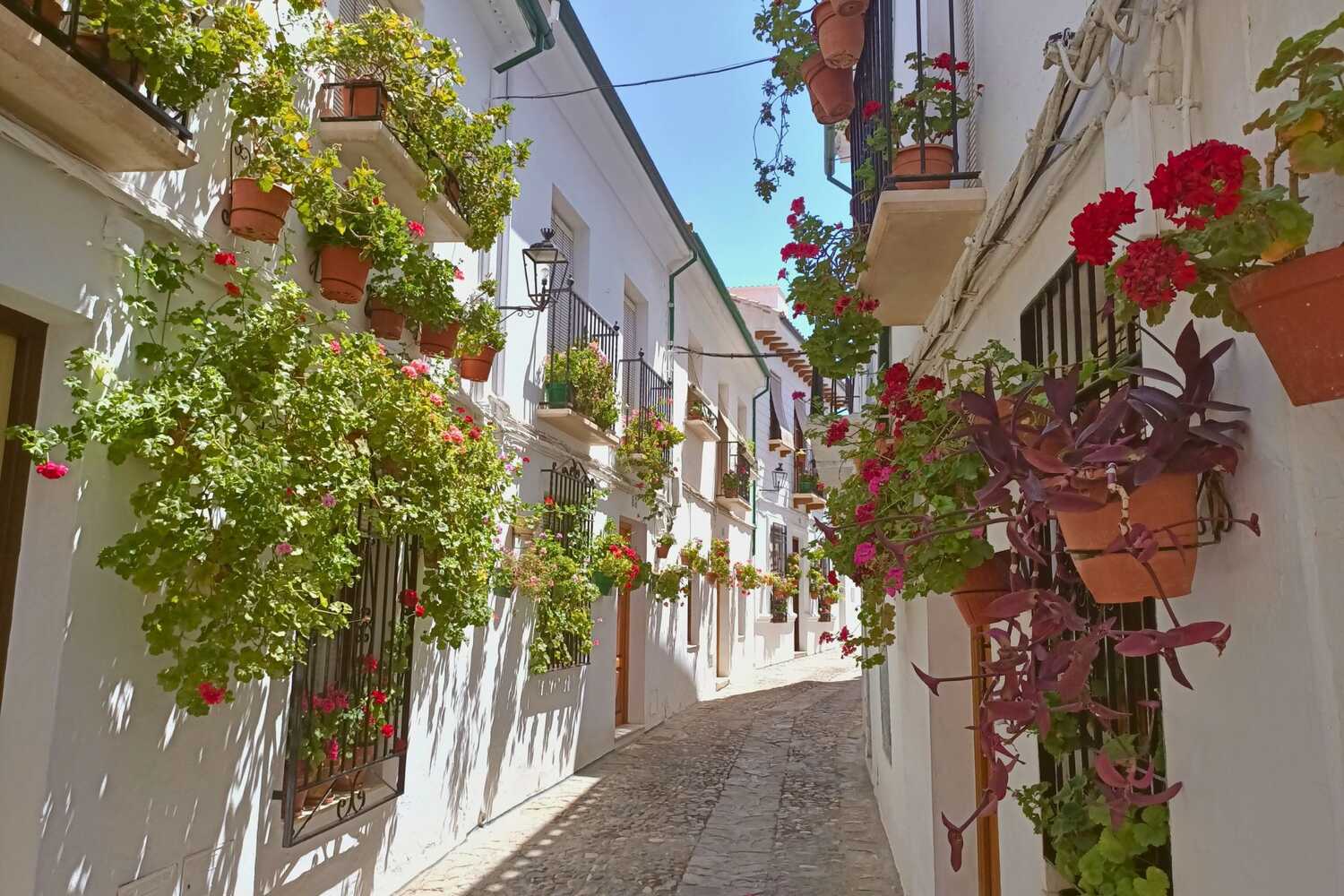
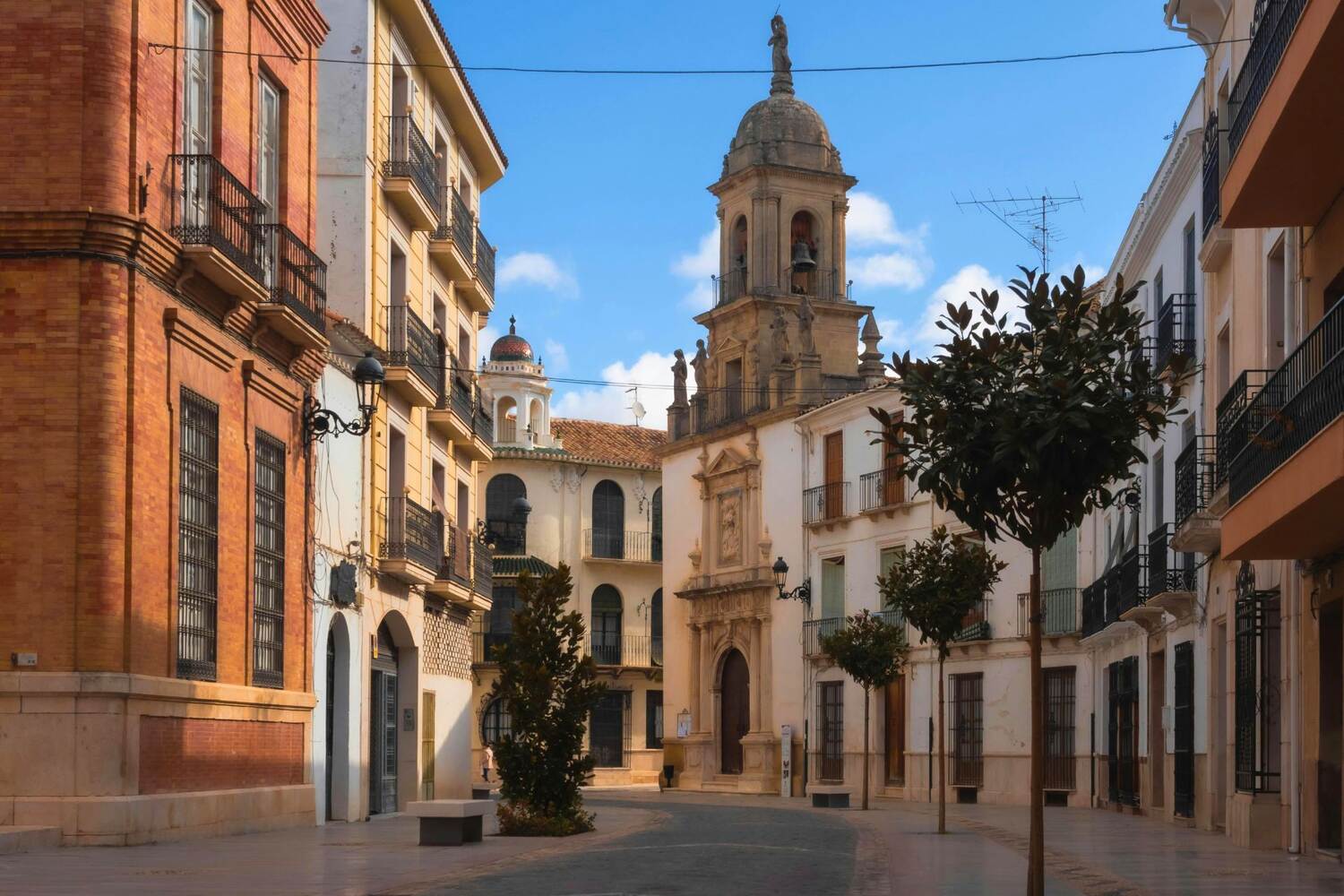
Montilla
Montilla is all about wine, which is a nice contrast to olive oil and sherry. It’s home to Montilla-Moriles, a region known for fortified wines that taste a bit like sherry but have their own style.
You can visit a bodega (winery) and taste wine straight from the barrel. The drinks are strong and smooth, perfect with food. Order salmorejo or fried eggplant with honey, as they go together like magic.
The town itself is small. A couple of churches, a few quiet streets, and little plazas make it a nice place to walk around. It’s not busy, so you can take your time and enjoy the local vibe. It’s one of these places like Setenil de las Botegas where there aren’t plenty of activities but you’ll enjoy more than bigger cities just for the setting.
Getting here is easy. A quick drive or bus ride from Córdoba, and you’re in wine country. If you love wine and good food, Montilla is an easy yes.
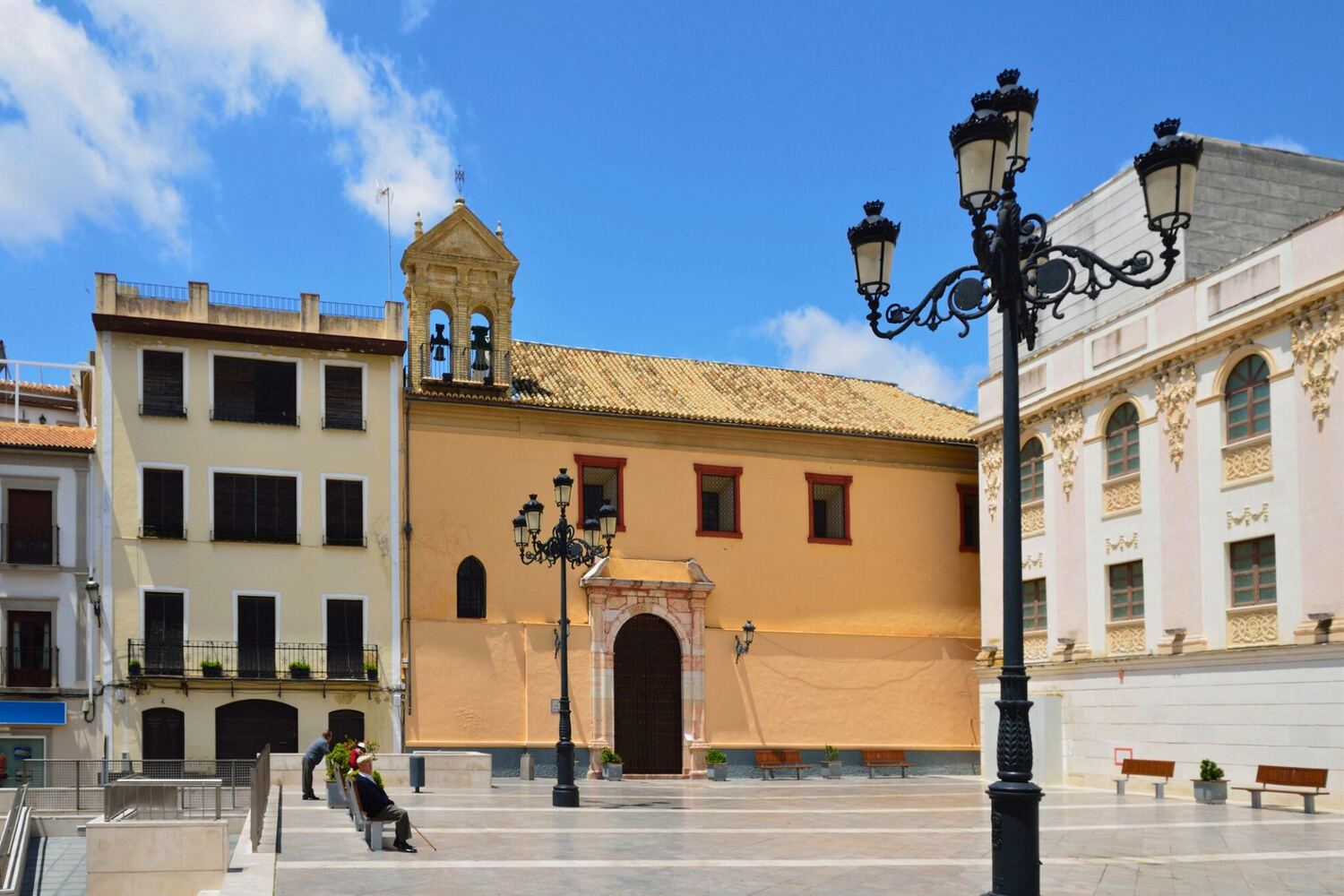
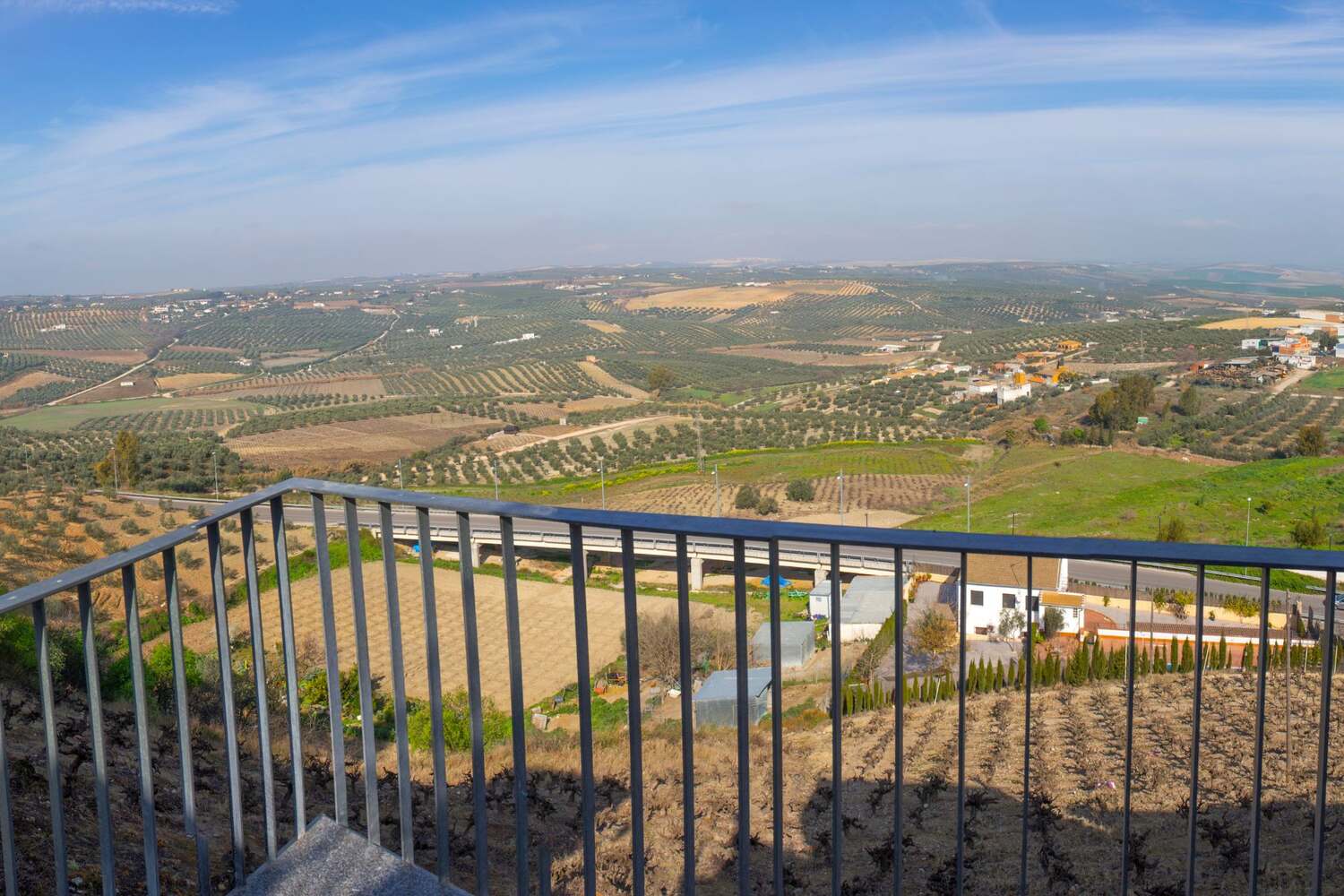
Carmona
First things first, I want to say that Carmona is gorgeous but you should visit it on the way to Seville or other villages, as it’s a little far and relatively small.
Carmona sits on a hill and looks out over endless fields. It’s an old town with Roman ruins, Moorish gates, and quiet streets.
Start at the Roman Necropolis. Ancient tombs, underground rooms, and old statues make it a cool spot to explore. Then walk through Puerta de Sevilla, a huge fortress gate that’s been standing for over 1,000 years.
The center is fun to wander, and you’re likely going to have these cute stone streets for yourself, as it’s not as crowded as other spots in southern Spain. Think old churches, and small bakeries keeping it lively. Santa María la Mayor has a huge golden altarpiece that’s hard to miss.
For a great view, head to Alcázar del Rey Don Pedro. It’s now a hotel, but the terrace has amazing views of the countryside. Grab a coffee, sit back, and enjoy the quiet for a little bit. Carmona feels old, calm, and a little forgotten – but in a superb way.
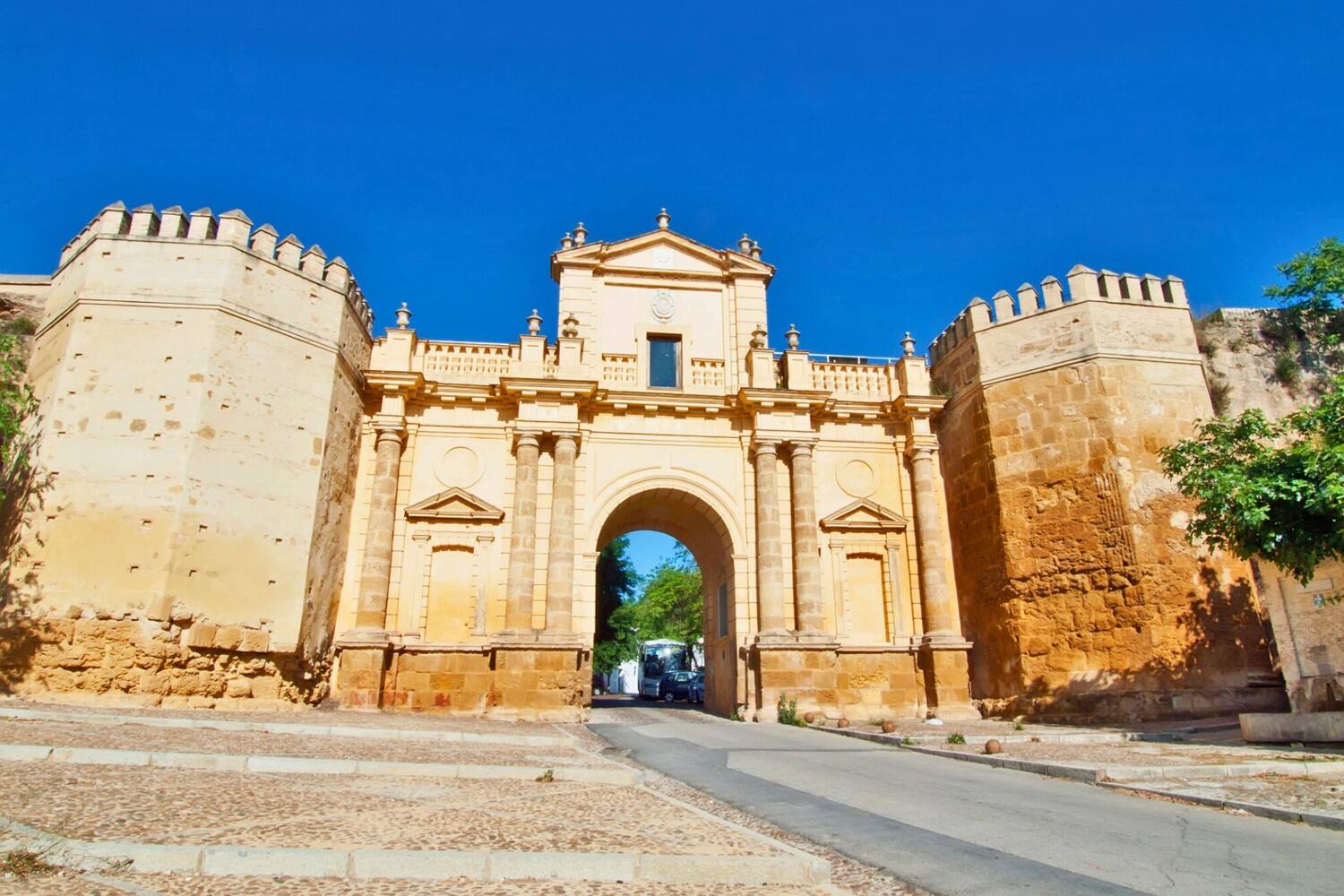
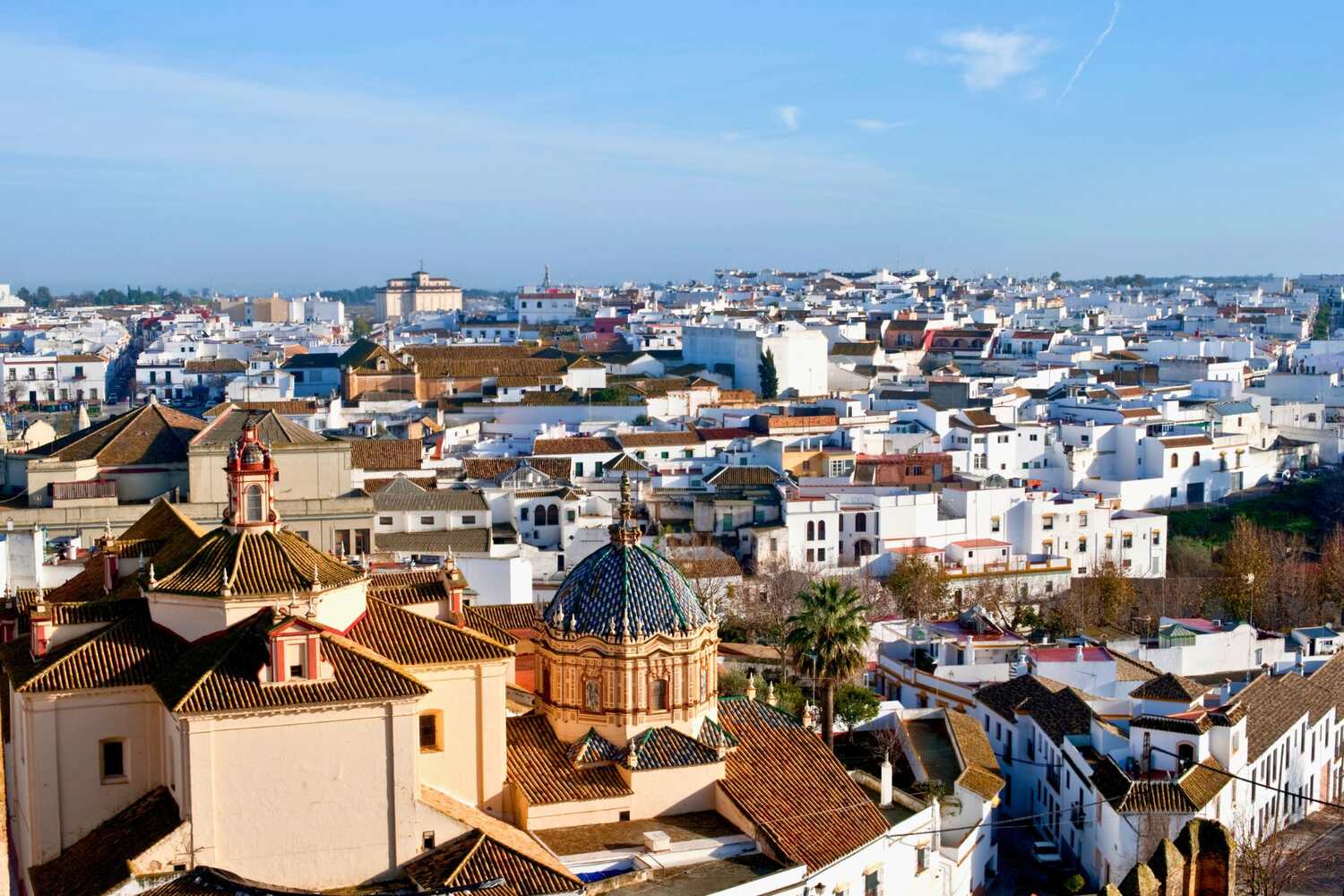
Sierra de Hornachuelos Natural Park
If you need a break from cities, noise, and packed streets, this is the place. Sierra de Hornachuelos is one of the largest natural parks in Andalusia, covering over 60,000 hectares of forests, rivers, and hills.
It’s part of the Sierra Morena mountain range, and it’s one of the best places near Córdoba for hiking, wildlife spotting, and fresh air.
The park is full of oak and cork trees, and that’s nice to visit in summer because there’s plenty of shade. If you’re lucky, you might see deer, wild boars, and even the rare Iberian lynx.
It’s also a birdwatching hotspot, home to vultures, eagles, and storks. Some areas have viewpoints where you can watch these birds gliding over the hills, which is pretty incredible if you’re into nature.
Of course, there are hiking trails too. One of the best routes is the Sendero del Águila, a moderate trail with great views of the river and cliffs where eagles nest. It’s 27-kilometer long, but you don’t need to complete it if you don’t feel like it.
Another good one is the Bembézar Reservoir Trail, which follows the water and leads to a small dam. The reflections of the trees on the still water make it a peaceful spot to stop and take a break. It’s a much shorter hike, and you can complete it in a couple of hours.
The best time to visit is spring or autumn, when the weather is cooler, and the landscape is green and full of flowers. In summer, it can get hot, but if you go early in the morning or late afternoon, the shade from the trees and the breeze from the rivers make it bearable.
The park is about an hour’s drive from Córdoba, and there’s no entrance fee, making it an easy, budget-friendly escape. If you love hiking, wildlife, or just some quiet time in nature, this park is a great choice.
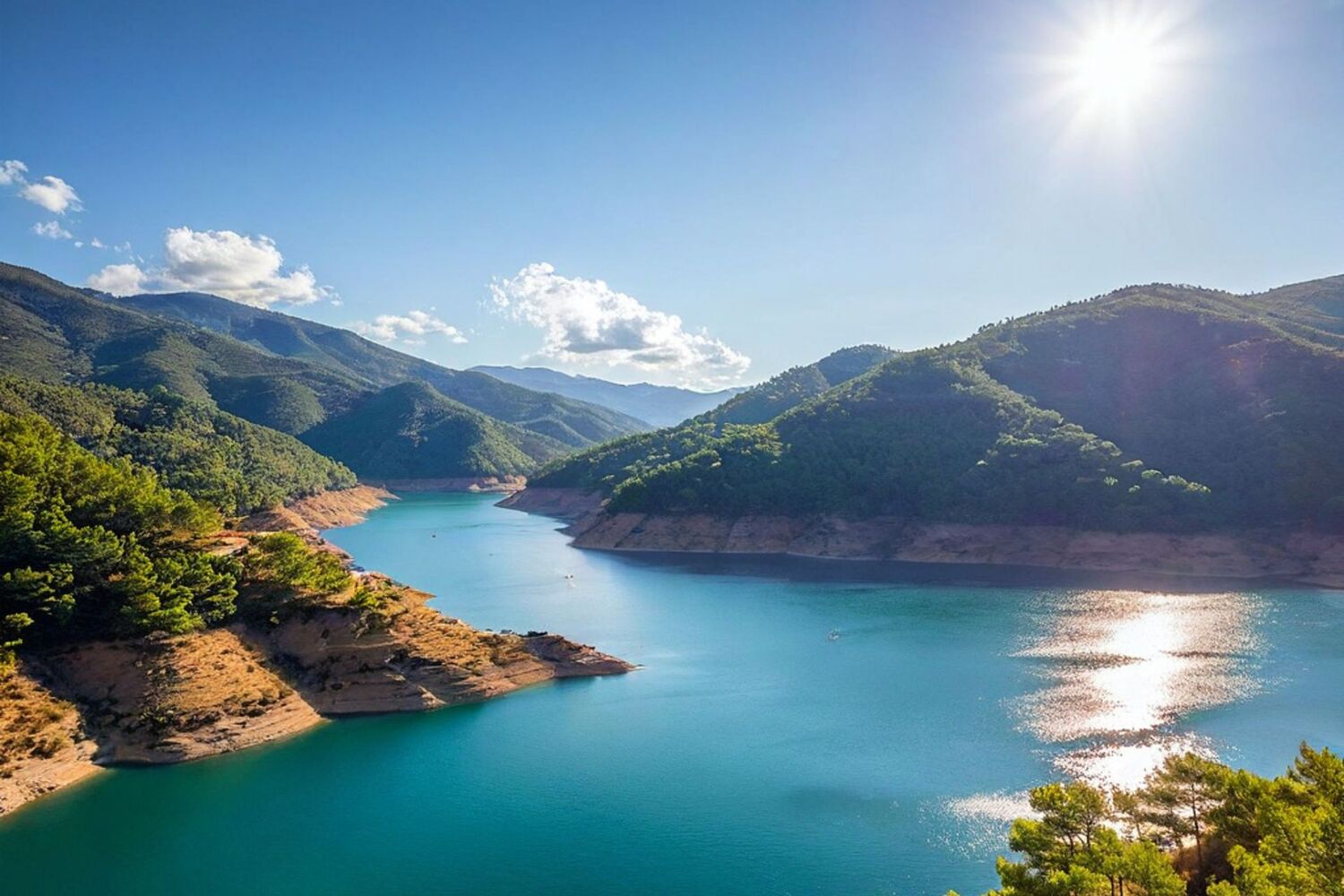

FAQs Before Returning to Cordoba
You might wonder if you should stick around overnight somewhere or just head back. Honestly, some places deserve a night or two, while others work fine in one day.
Cordoba’s central location makes returning simple, especially with good train and bus links. Here are a few final questions you might have.
Is It Worth Spending the Night in Cordoba?
Oh yes, 100%. Cordoba feels completely different once the day-trippers leave. The streets quiet down, the Mezquita lights up in the evening, and you can grab late-night tapas without the usual crowds.
Staying overnight also gives you the chance to explore lesser-known spots in the early morning, like the patios or small museums that open right after breakfast.
Are There Guided Tours from Cordoba?
Yes, and they’re a great option if you want to see more without worrying about driving or train schedules. Plenty of local companies run day tours to places like Granada or Ronda. Plus, you’ll spend the day with a guide that will tell you stories about those places, and that’s a big bonus.
Some tours focus on food and wine, taking you straight to wineries or local farms for tastings. If that’s your thing, it’s worth looking into.
Keep in mind that tours sell out all the time, so booking ahead is smart, especially if you’re short on time. It’ll cost a little more than going on your own, but you won’t have to deal with transport or logistics.
Are There White Villages near Cordoba?
Yes, and they’re worth the trip. Towns like Zuheros, Iznájar, and Luque have the classic whitewashed houses, flower-filled balconies, and views of rolling olive groves. If you do rent a car, you can reach them in about an hour. You can also take the bus but it’s not as convenient.
These places have a much slower pace than Cordoba or the bigger cities. You can sit in a tiny plaza with a coffee, wander through quiet streets, and maybe chat with a few locals if you get the chance. The perfect way to sit at a cafe with views and draw or write a book.
Conclusion
You understood it: Cordoba makes an ideal base for exploring Andalusia. You can easily get to Seville, Granada, or smaller villages and nature spots, then come back for Cordoba’s cozy tapas bars and historic streets.
There’s no right or wrong way to do it, just pick a trip based on what you feel like. Maybe a buzzing city one day, a quiet countryside escape the next.
If you have extra time, take more than one day trip and see how much the area has to offer. Plan a little, but leave room for surprises. Cordoba has a way of making you slow down and enjoy the moment, and that’s what makes it special.

